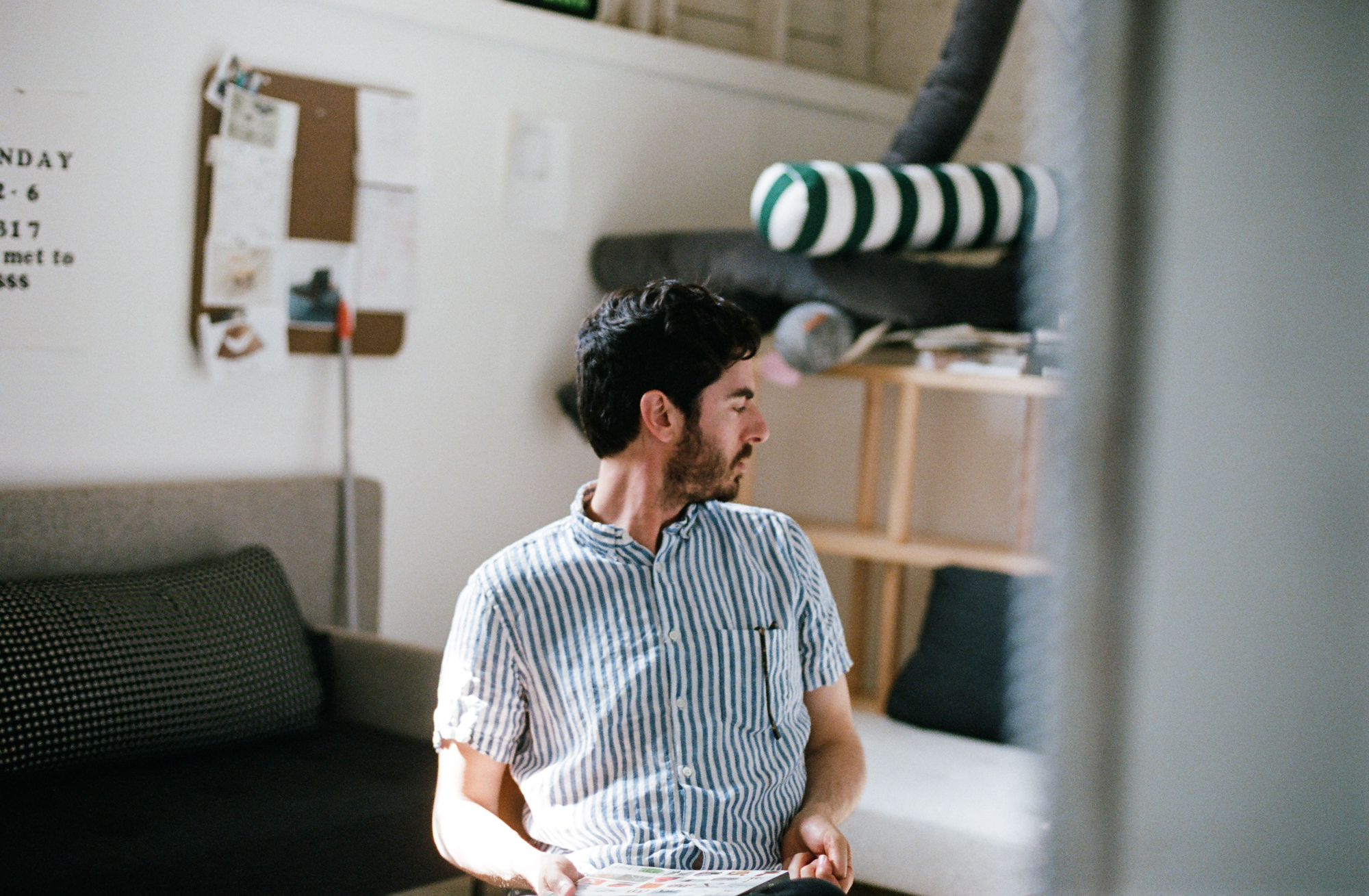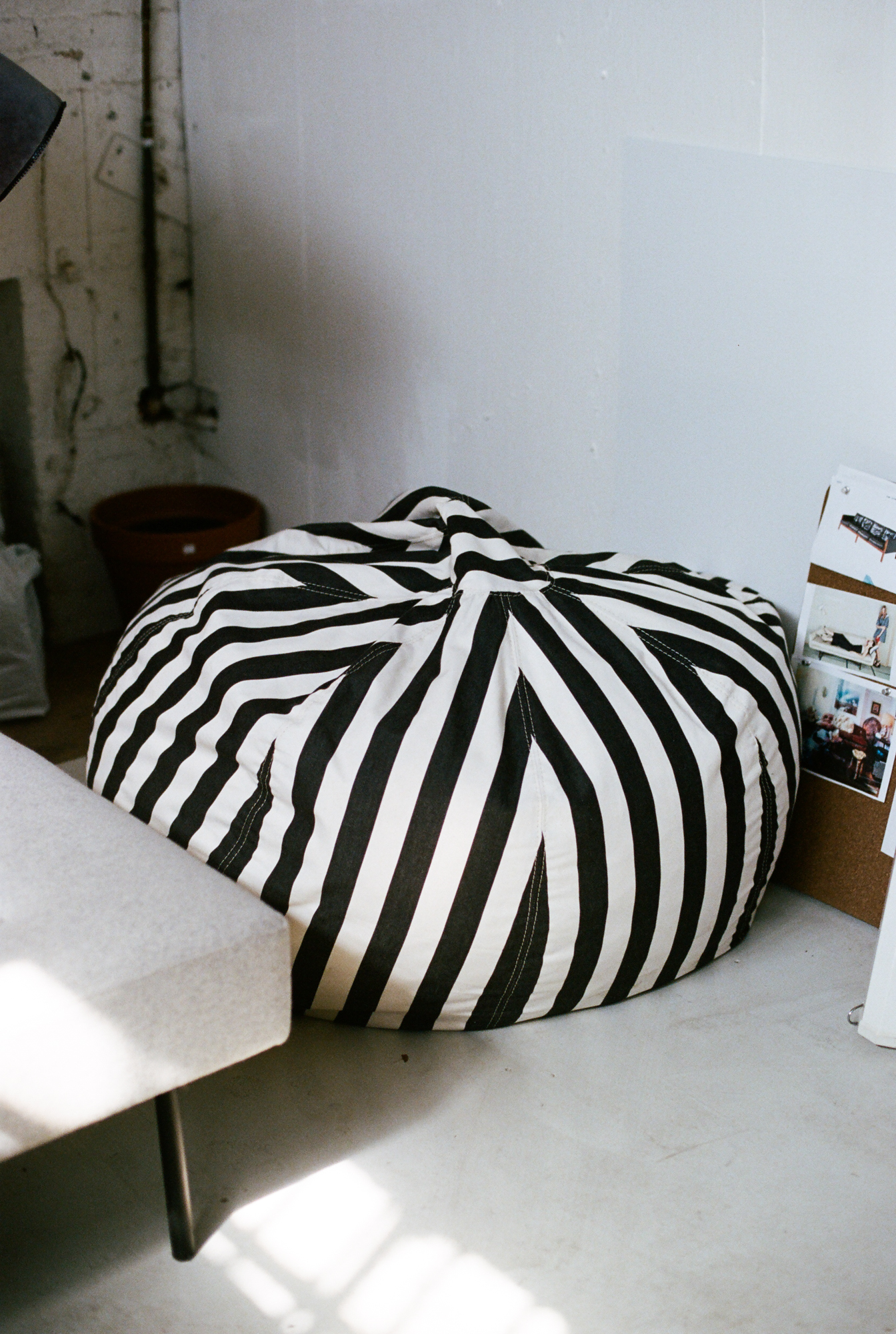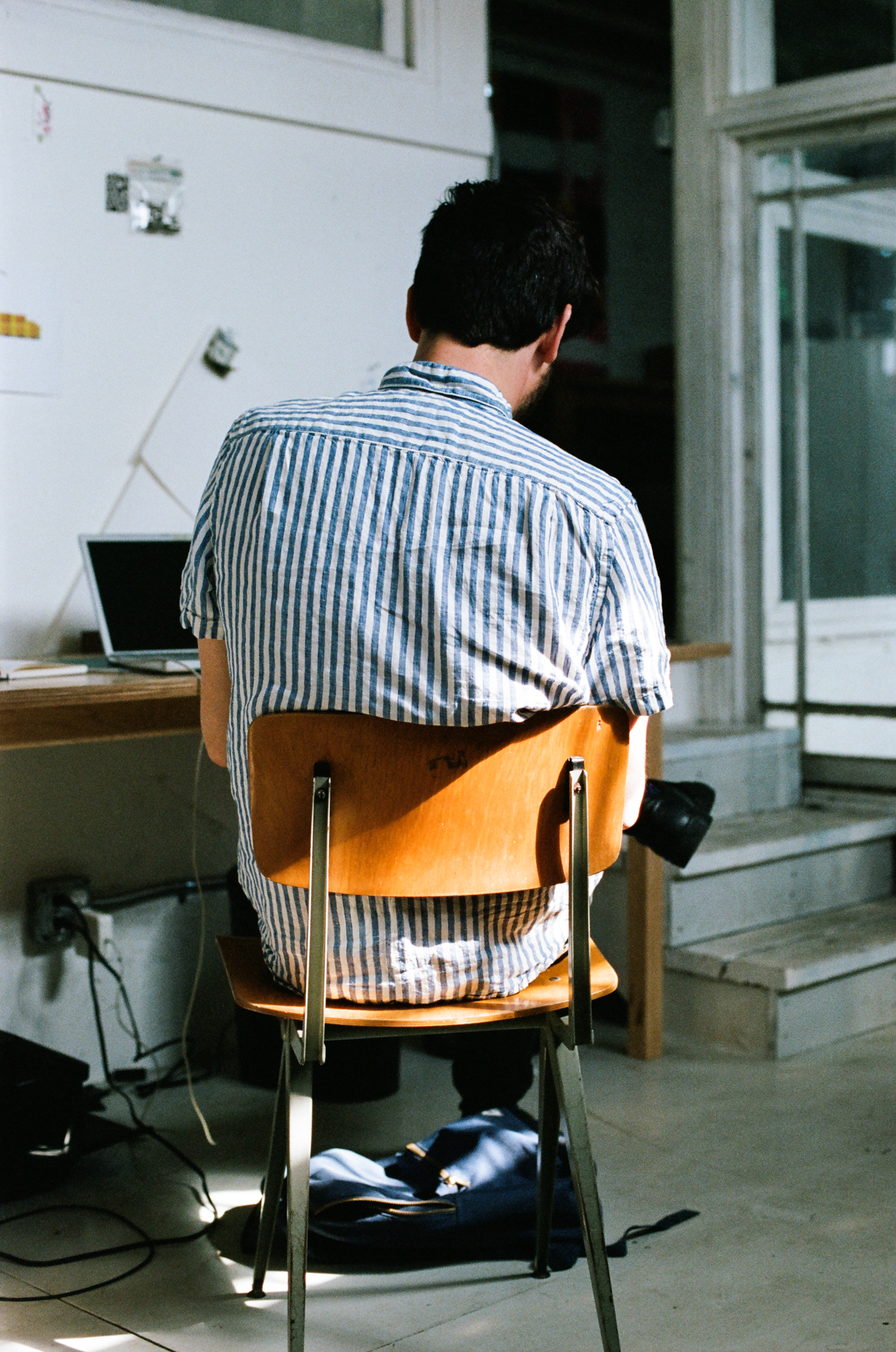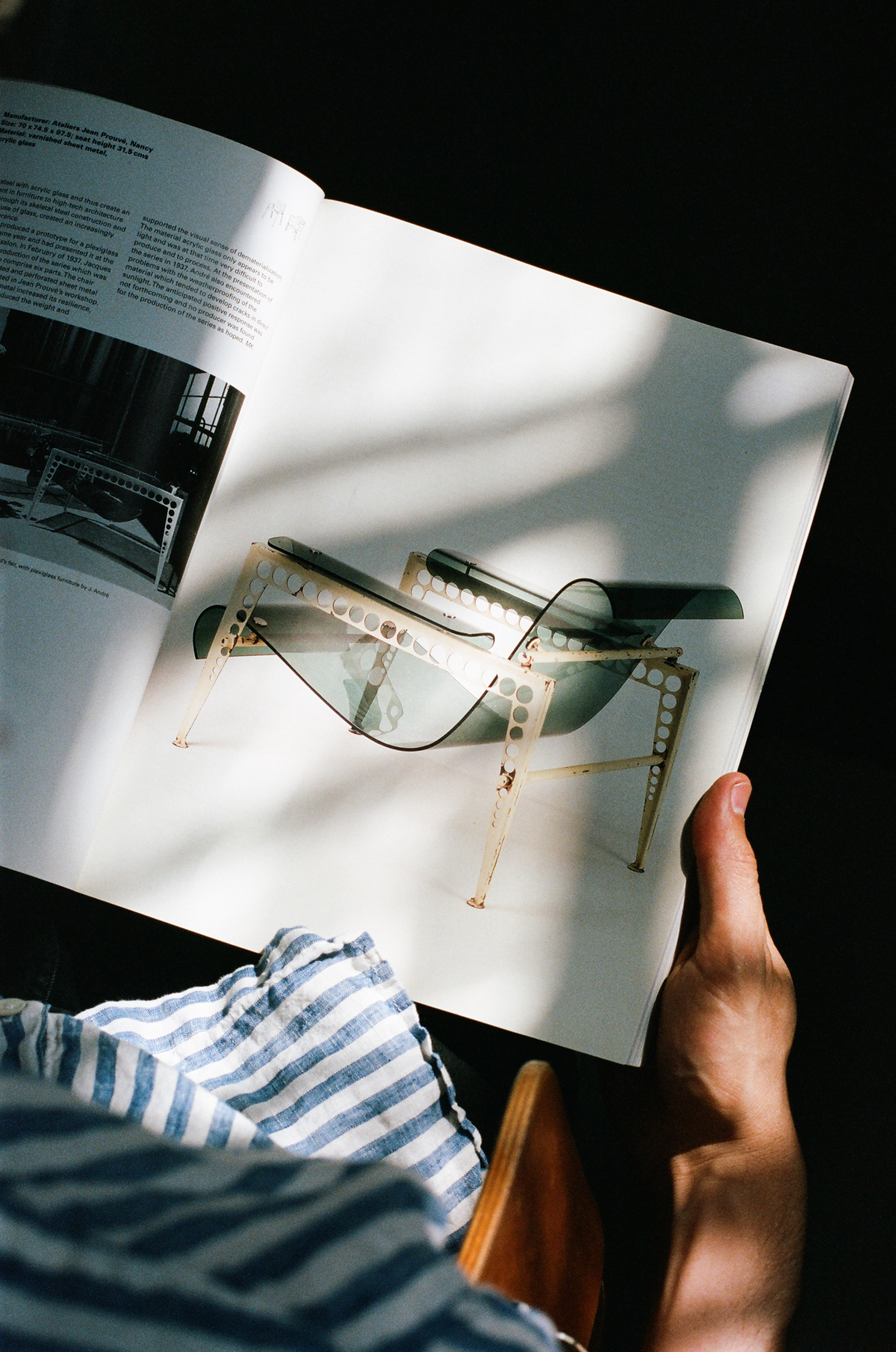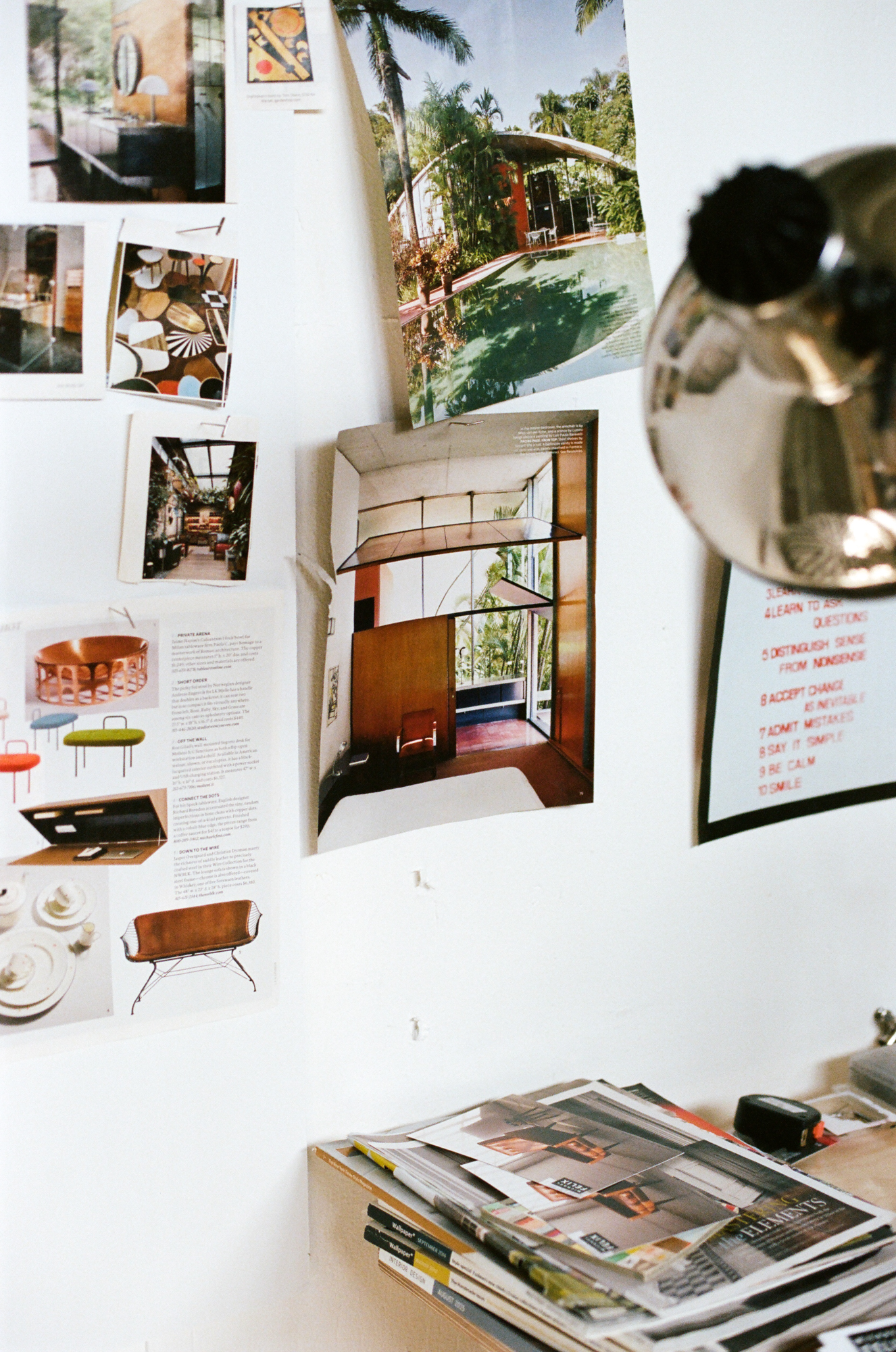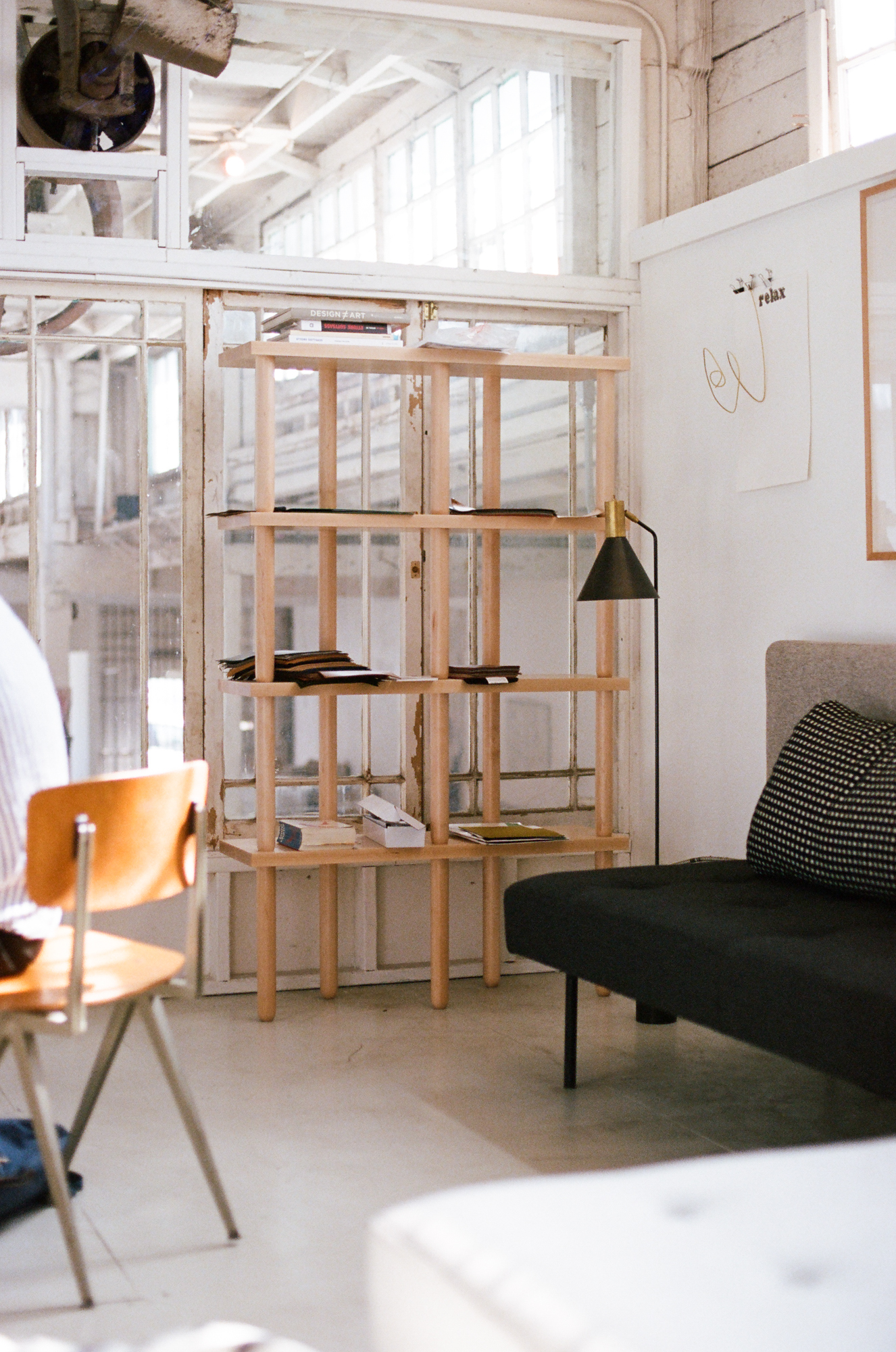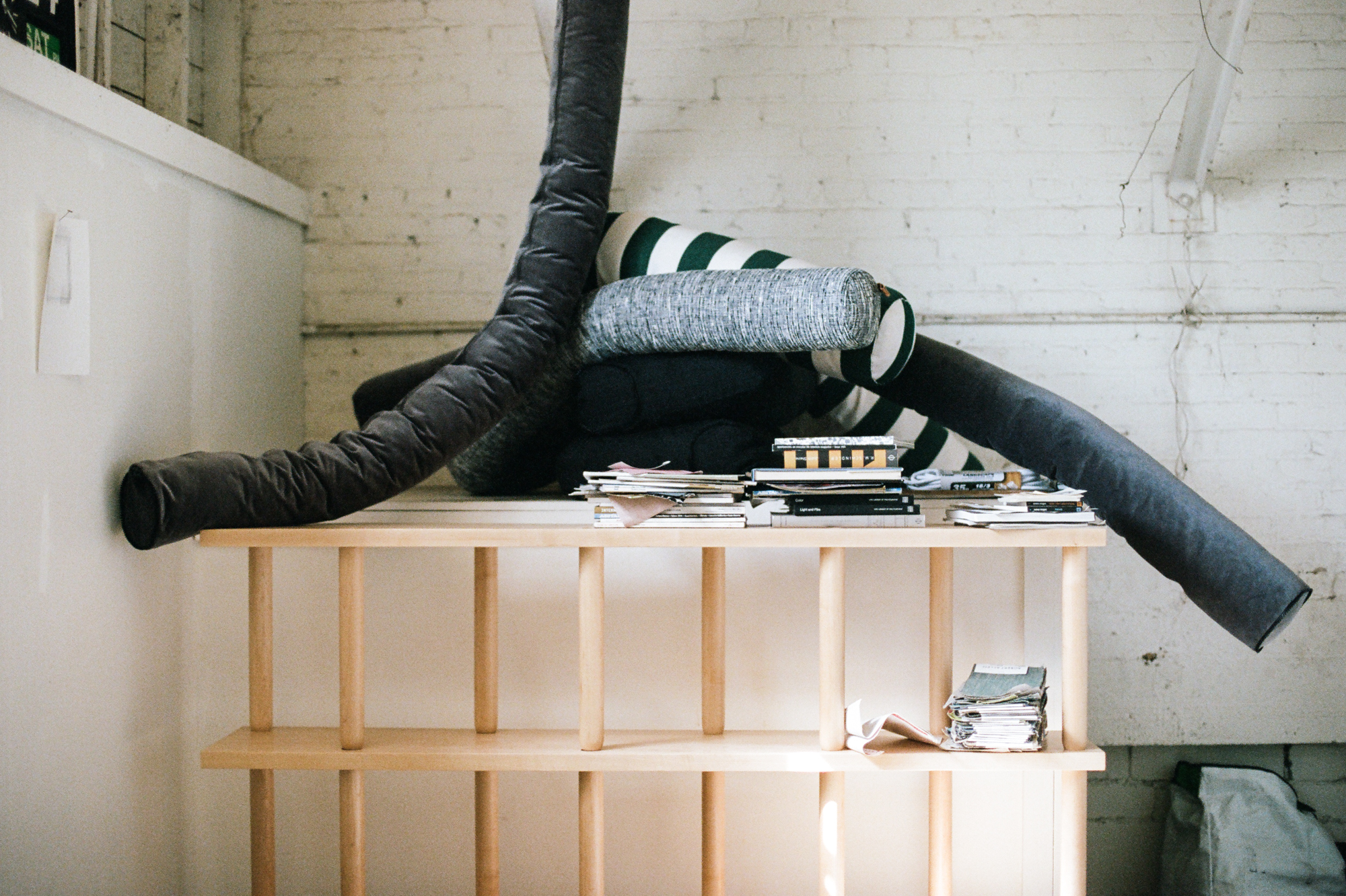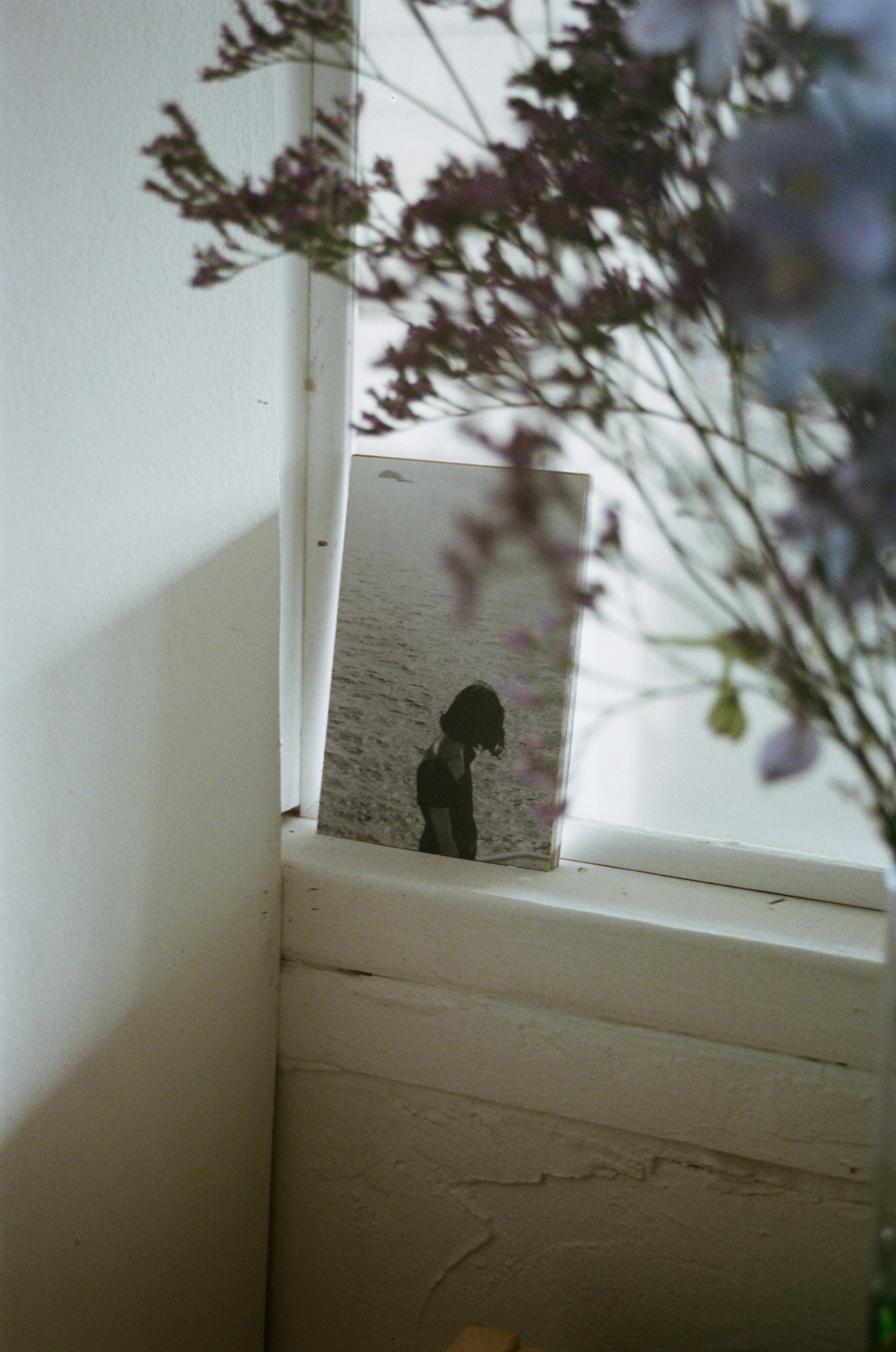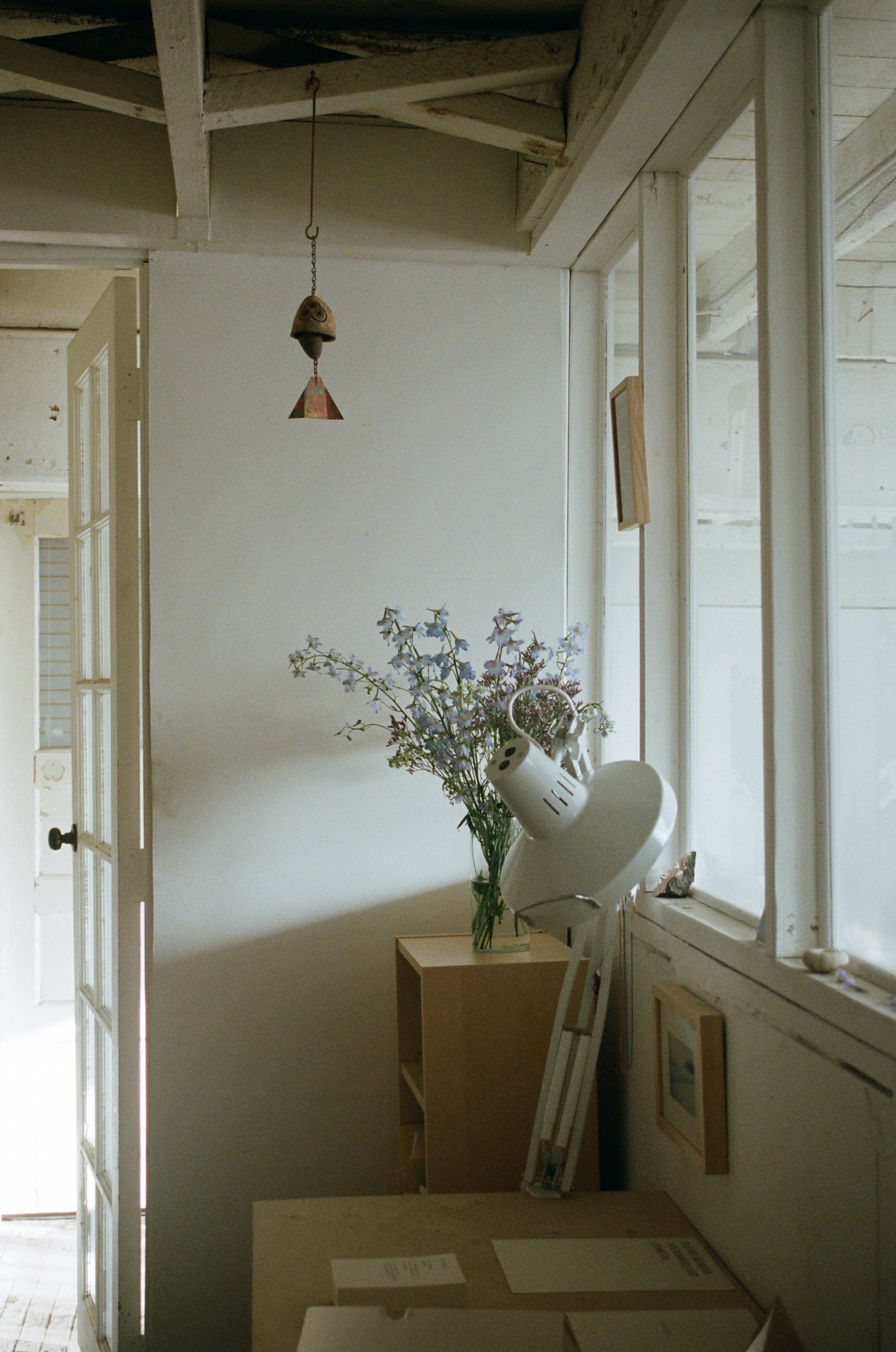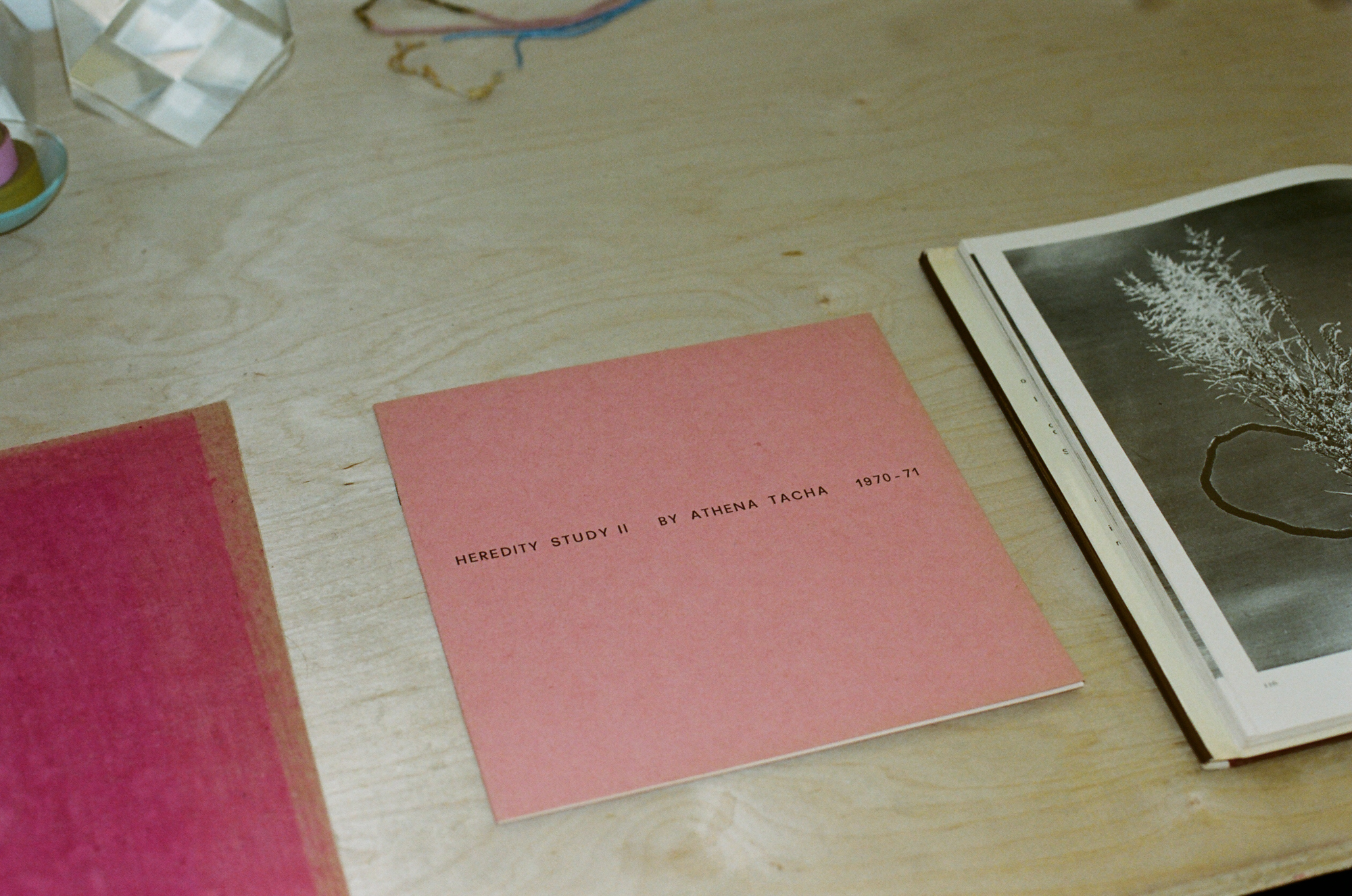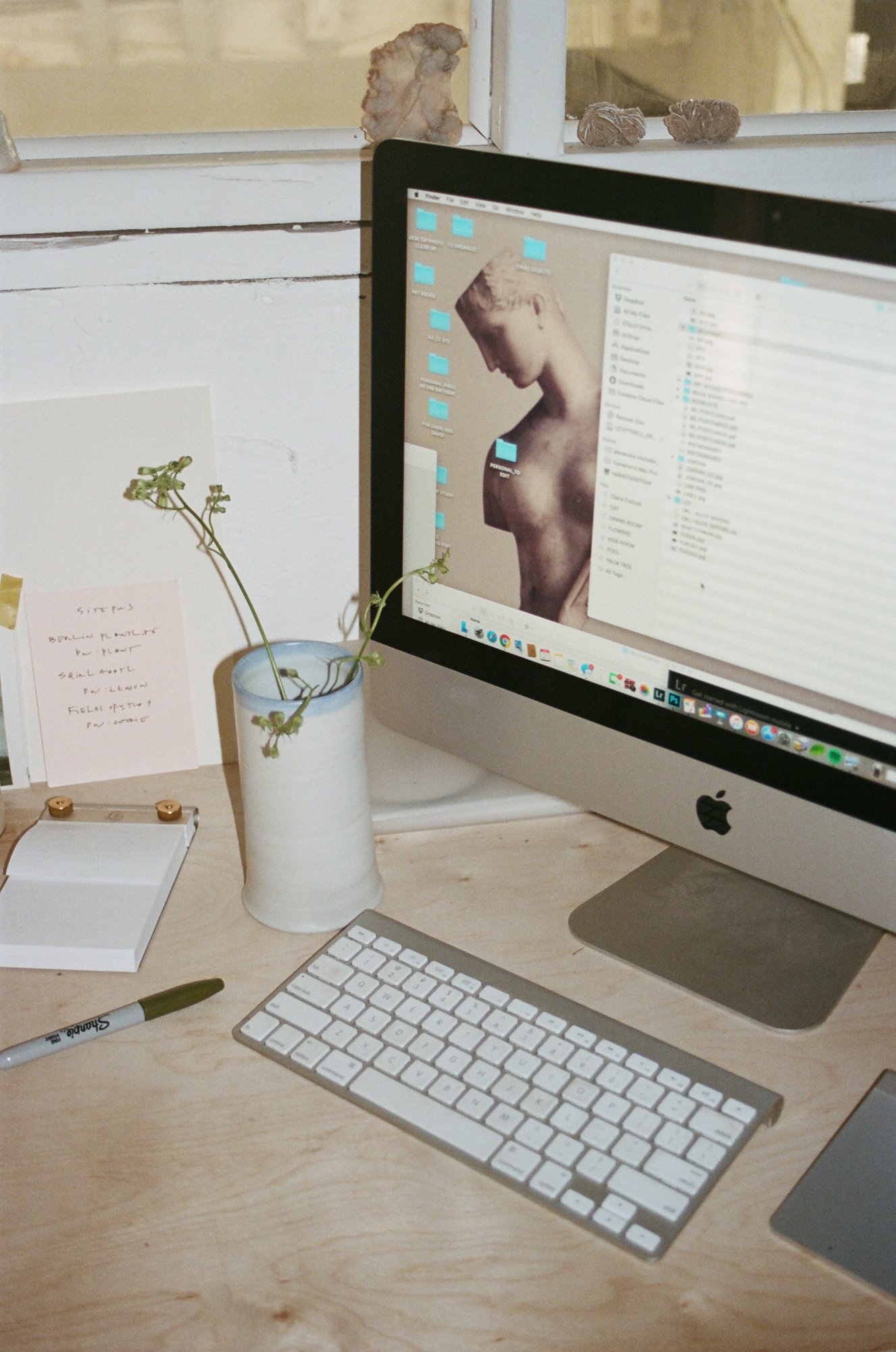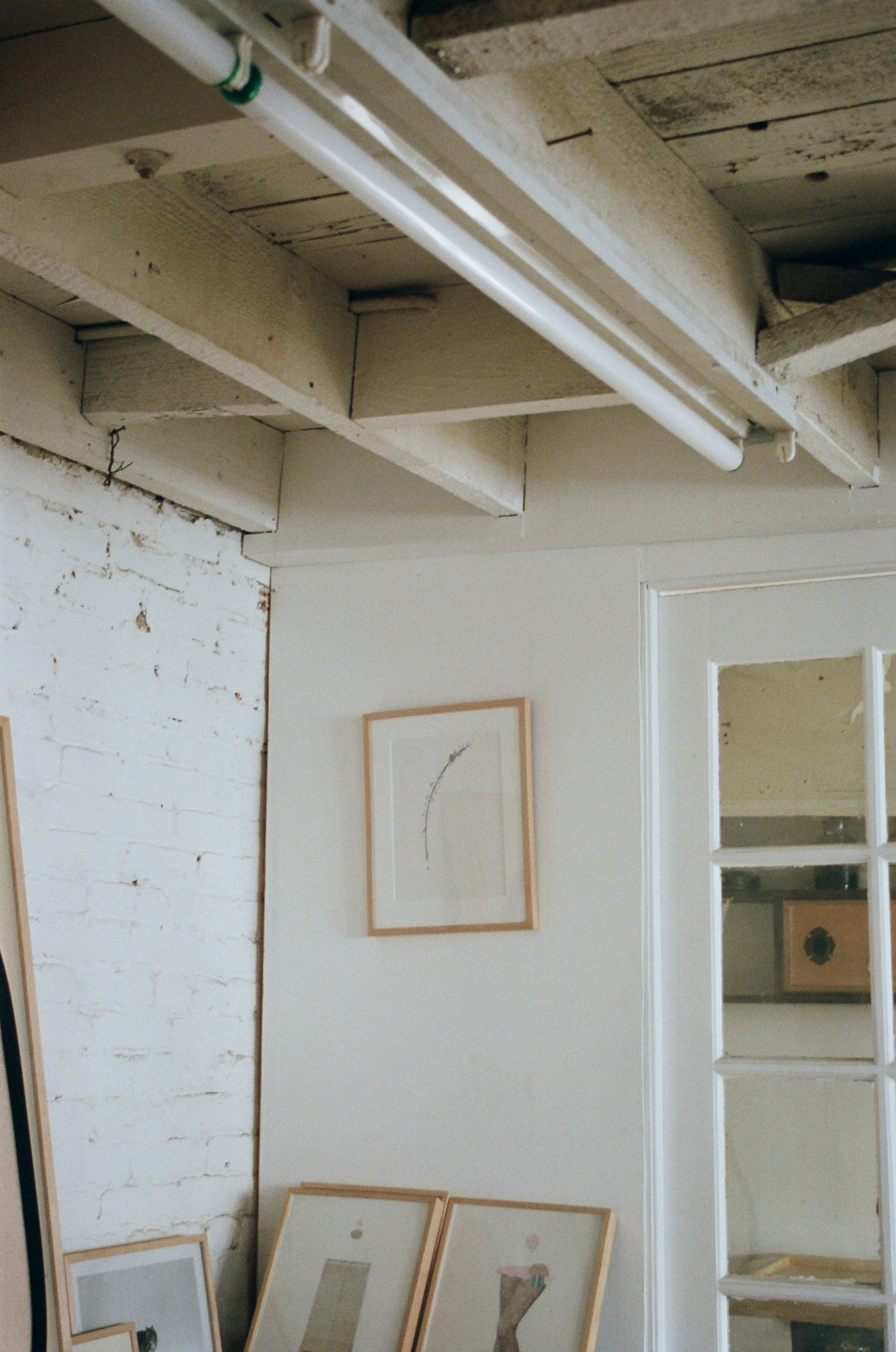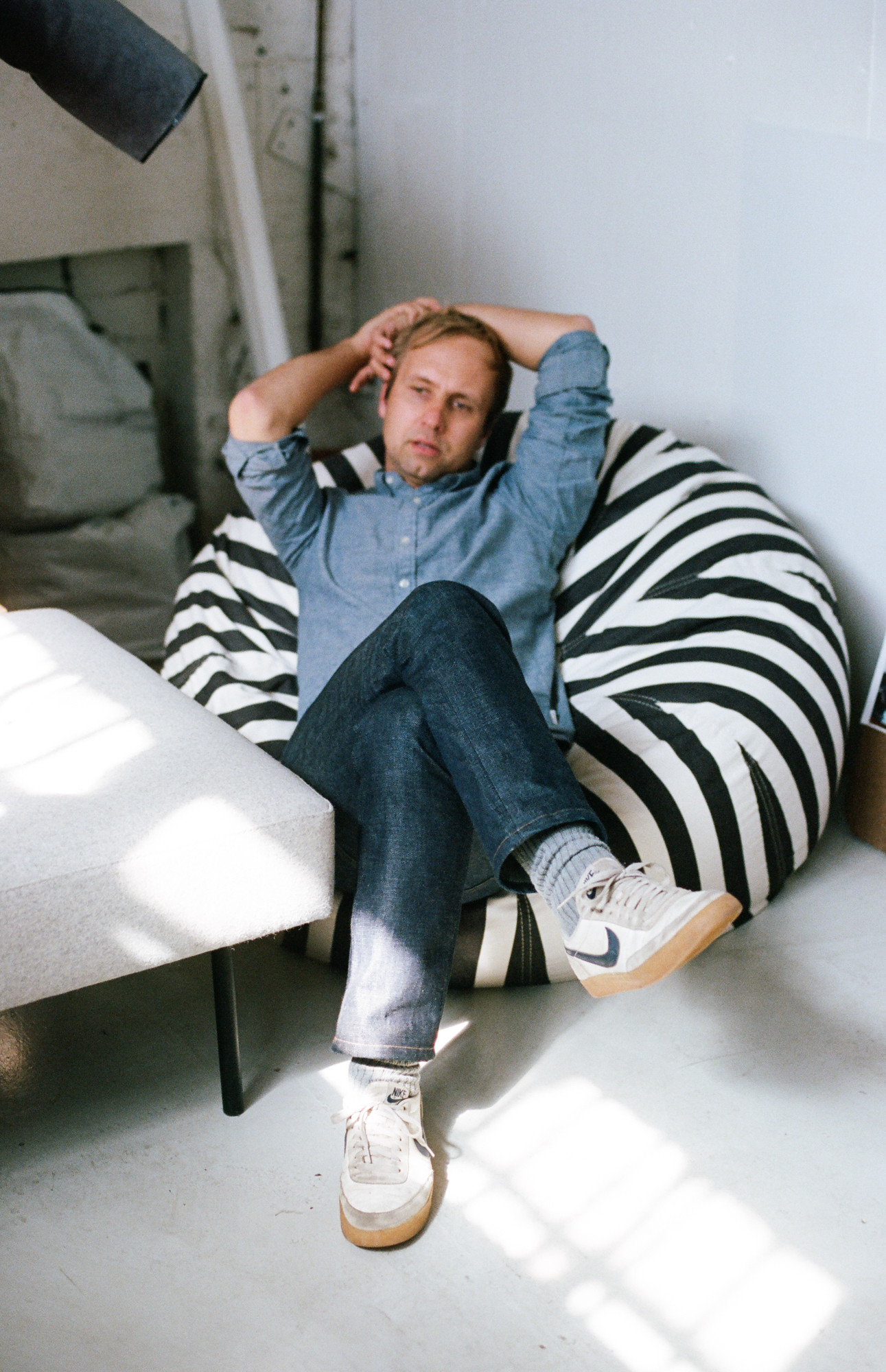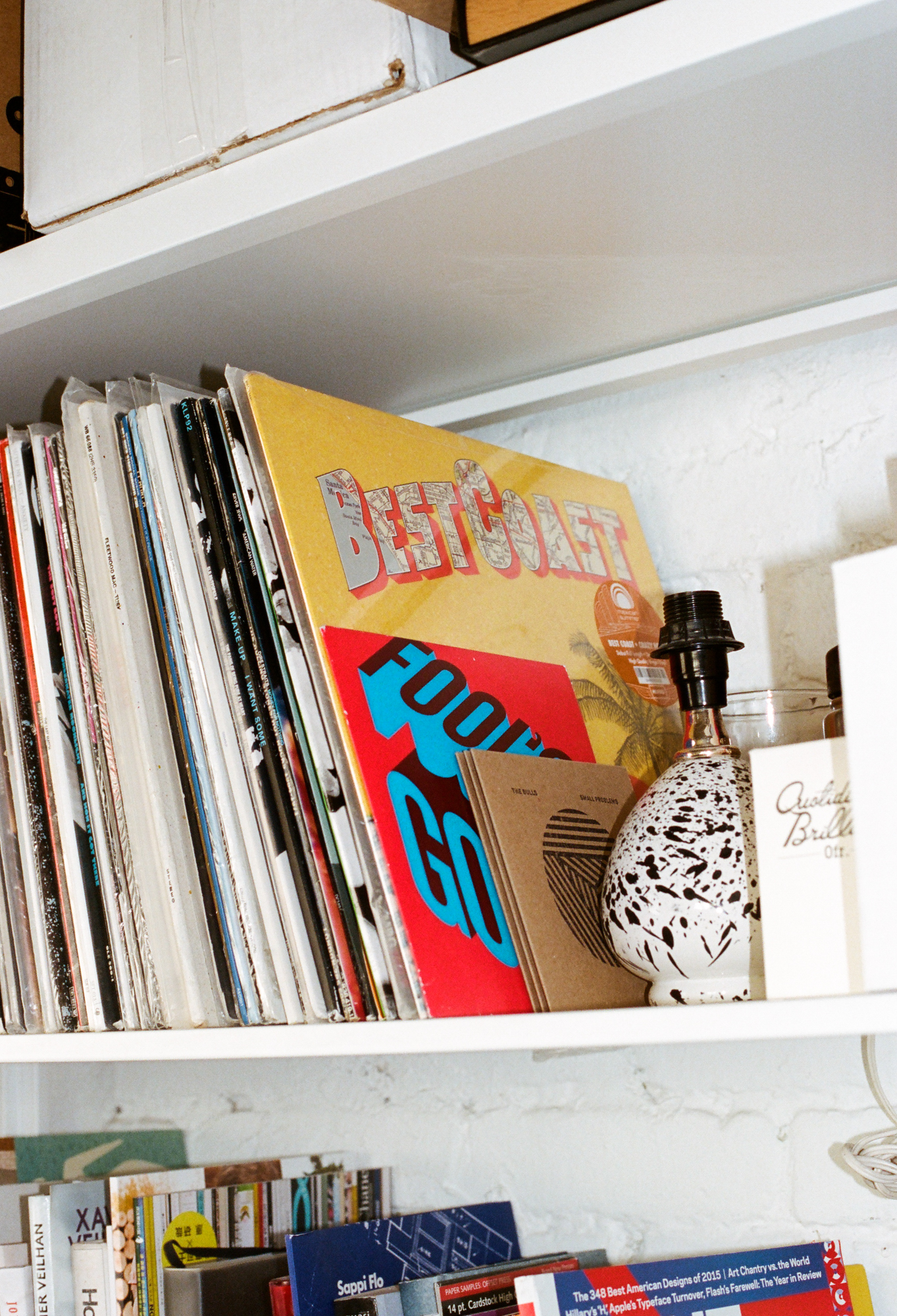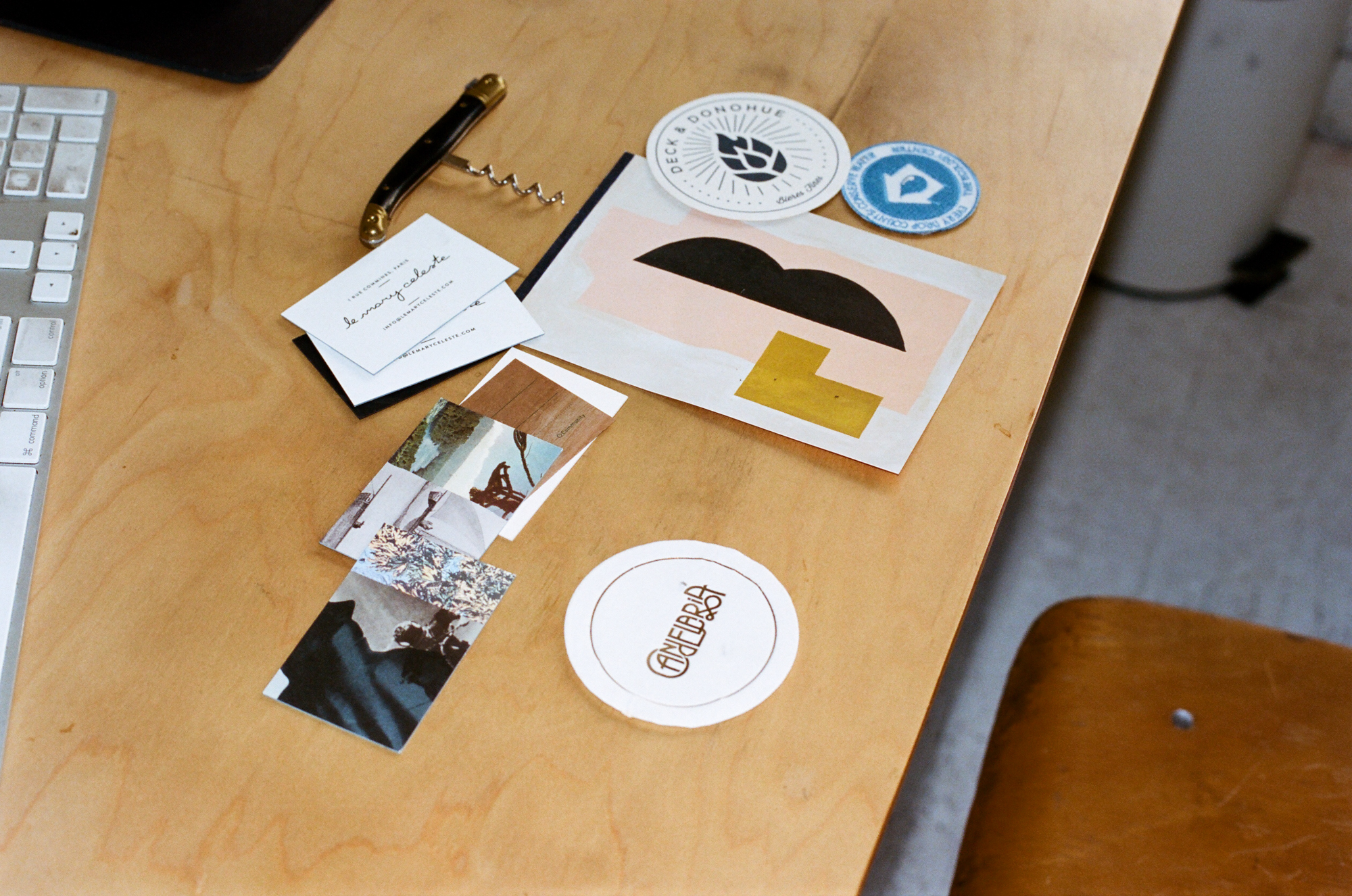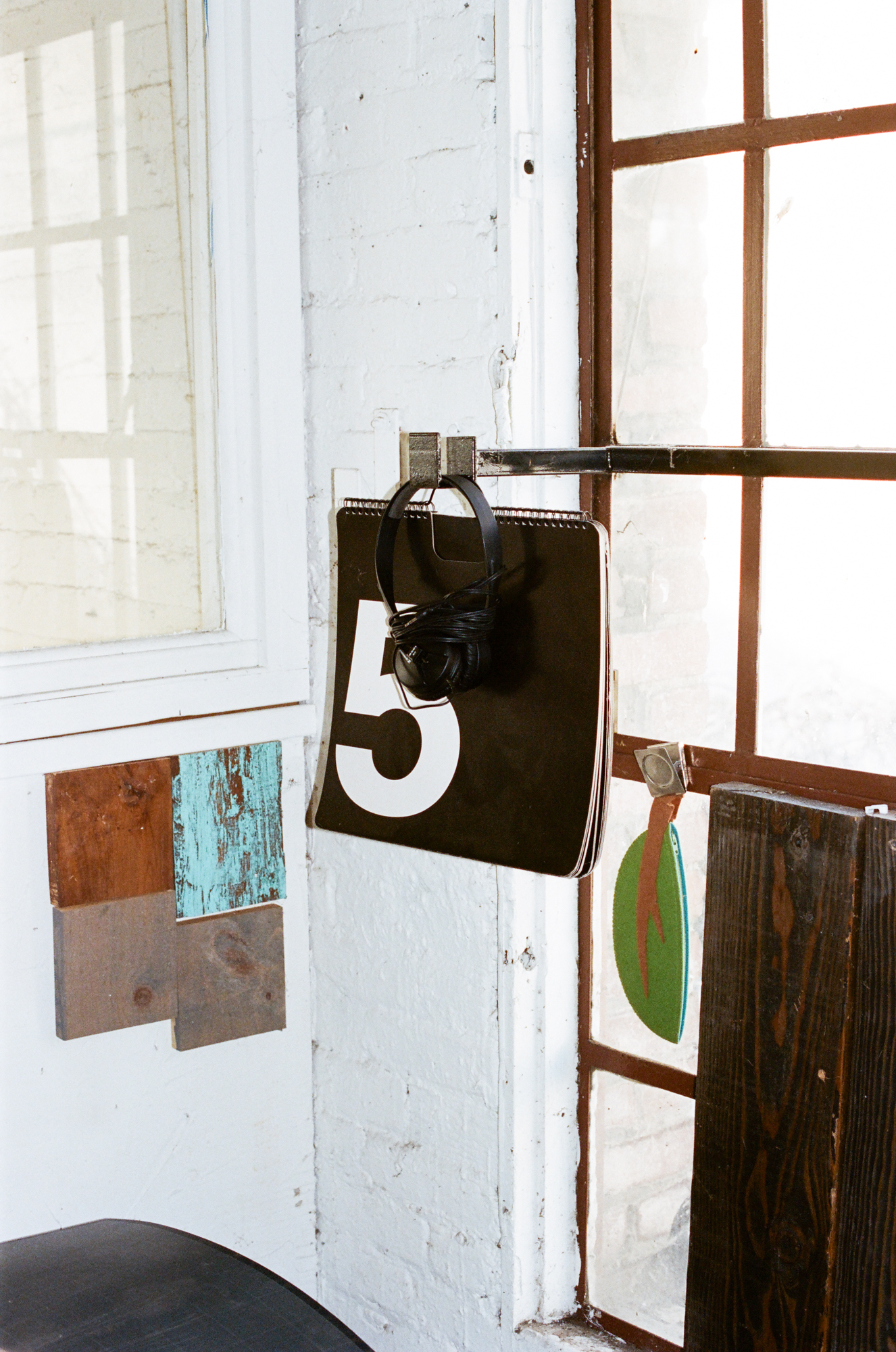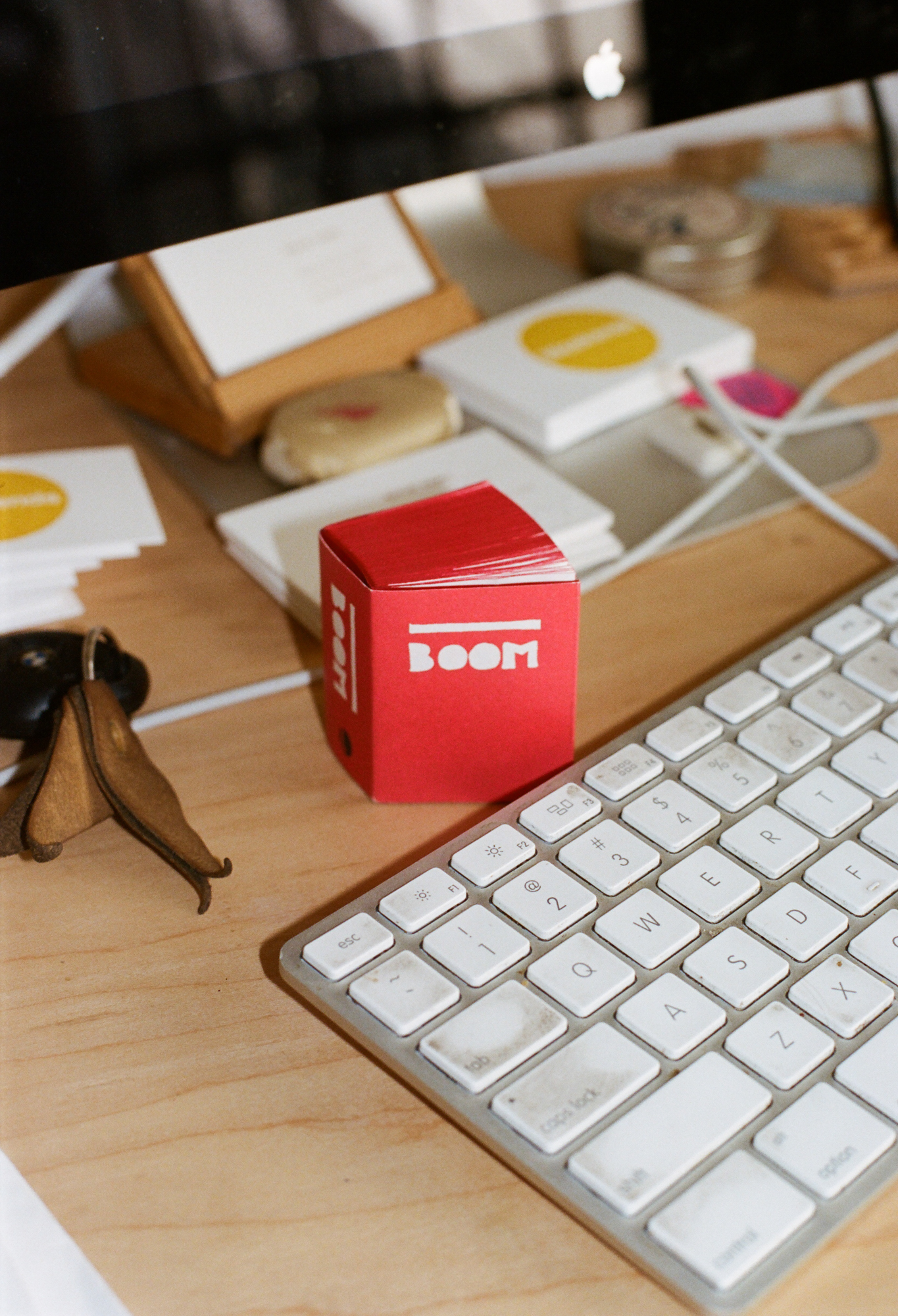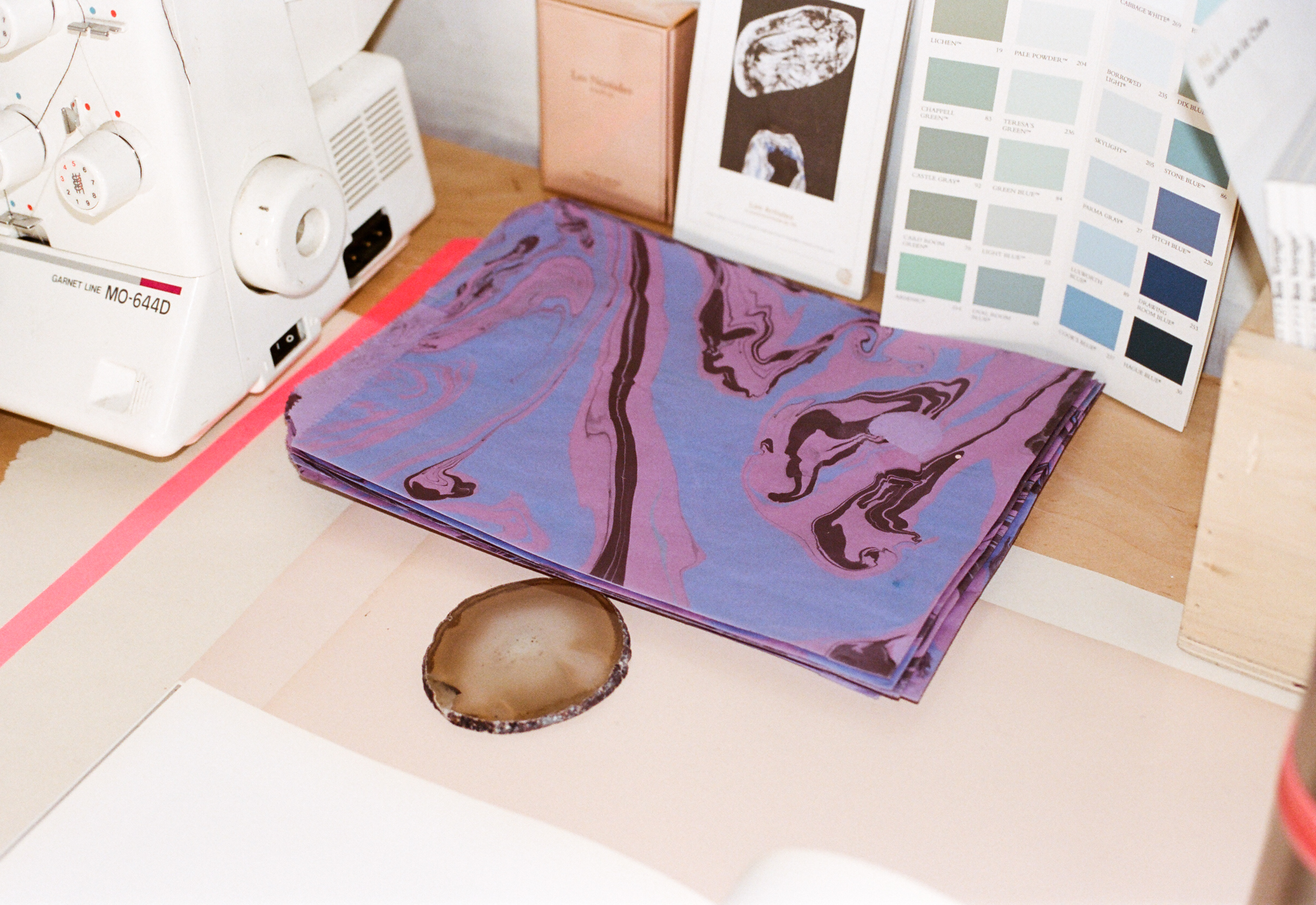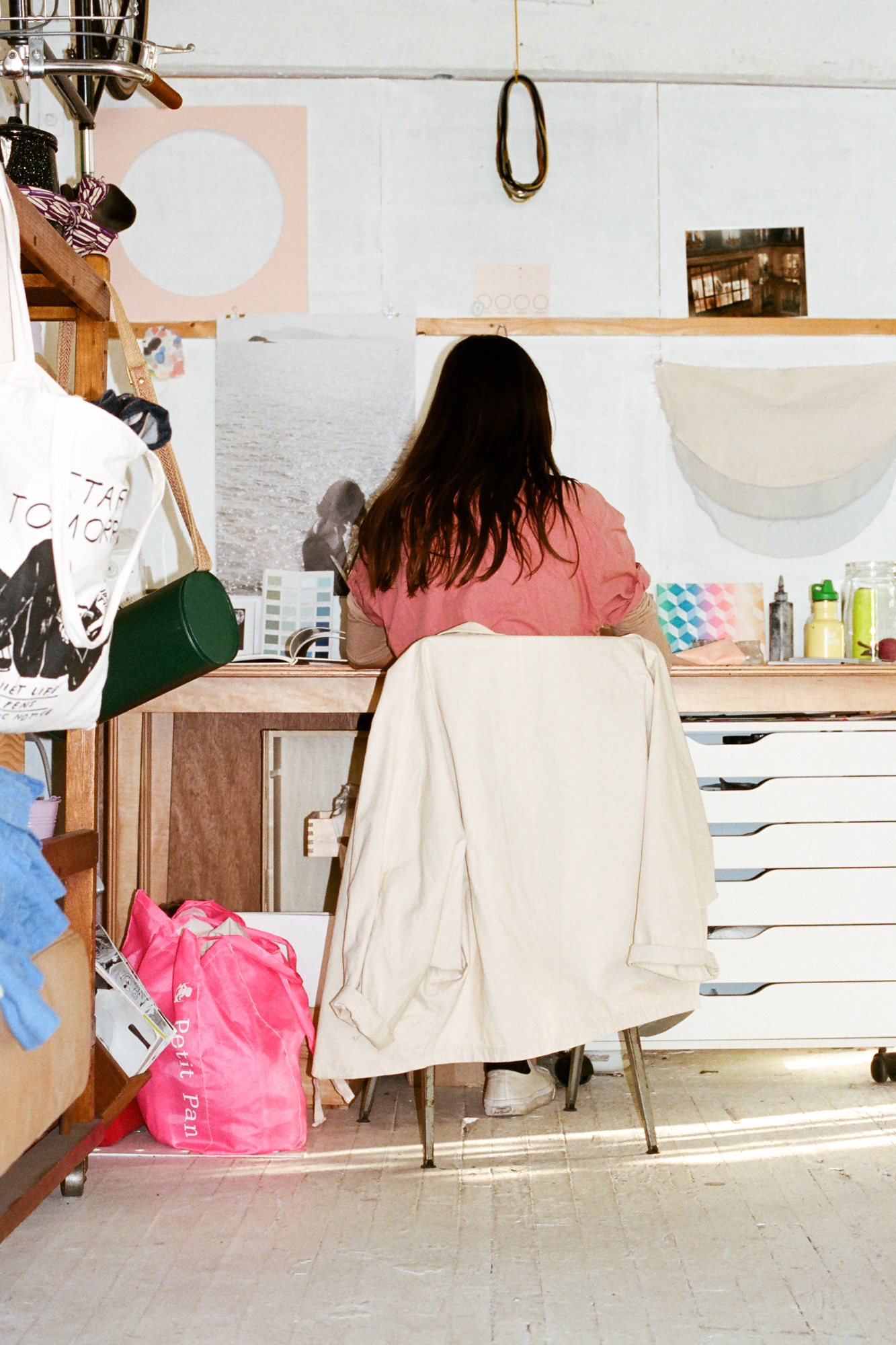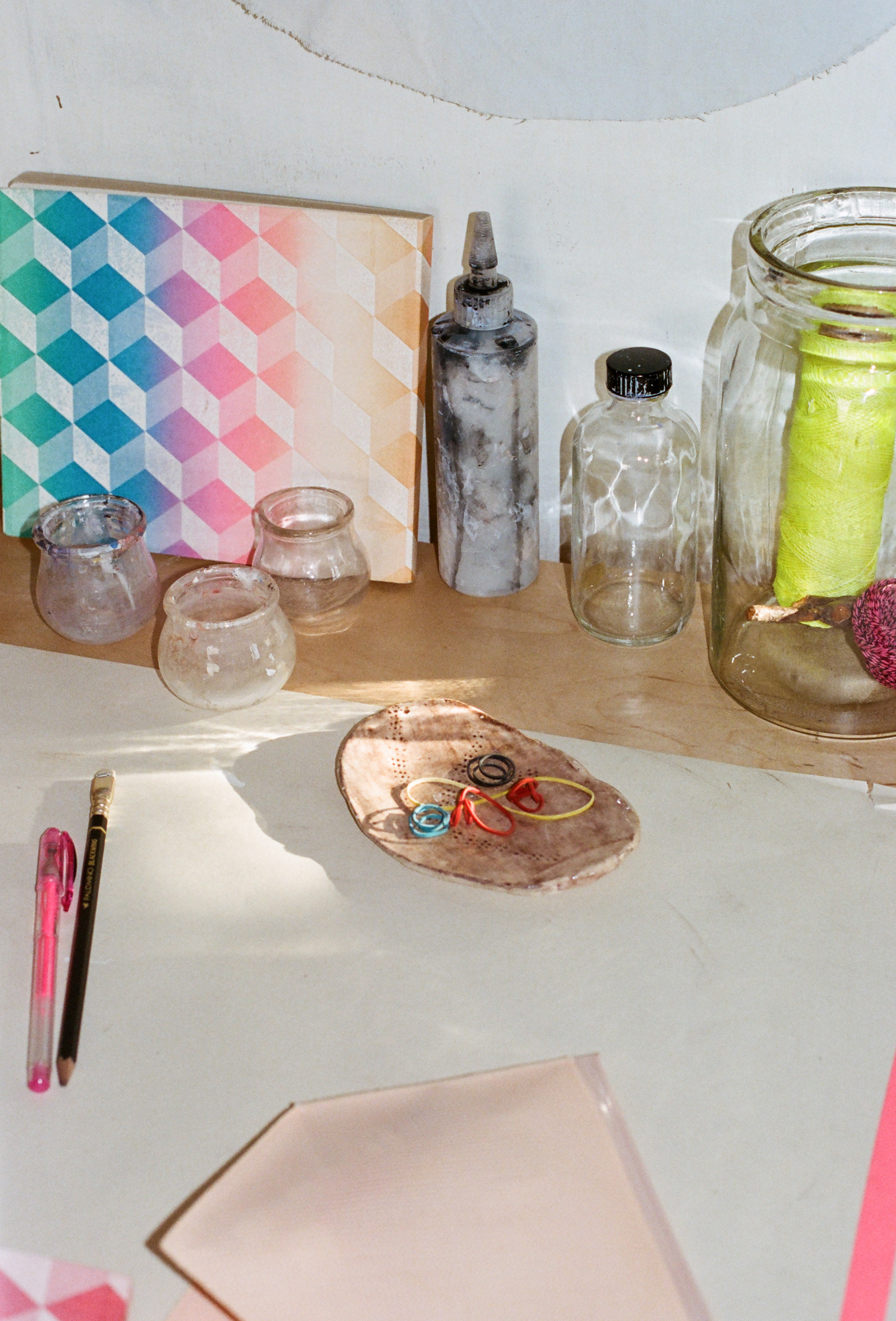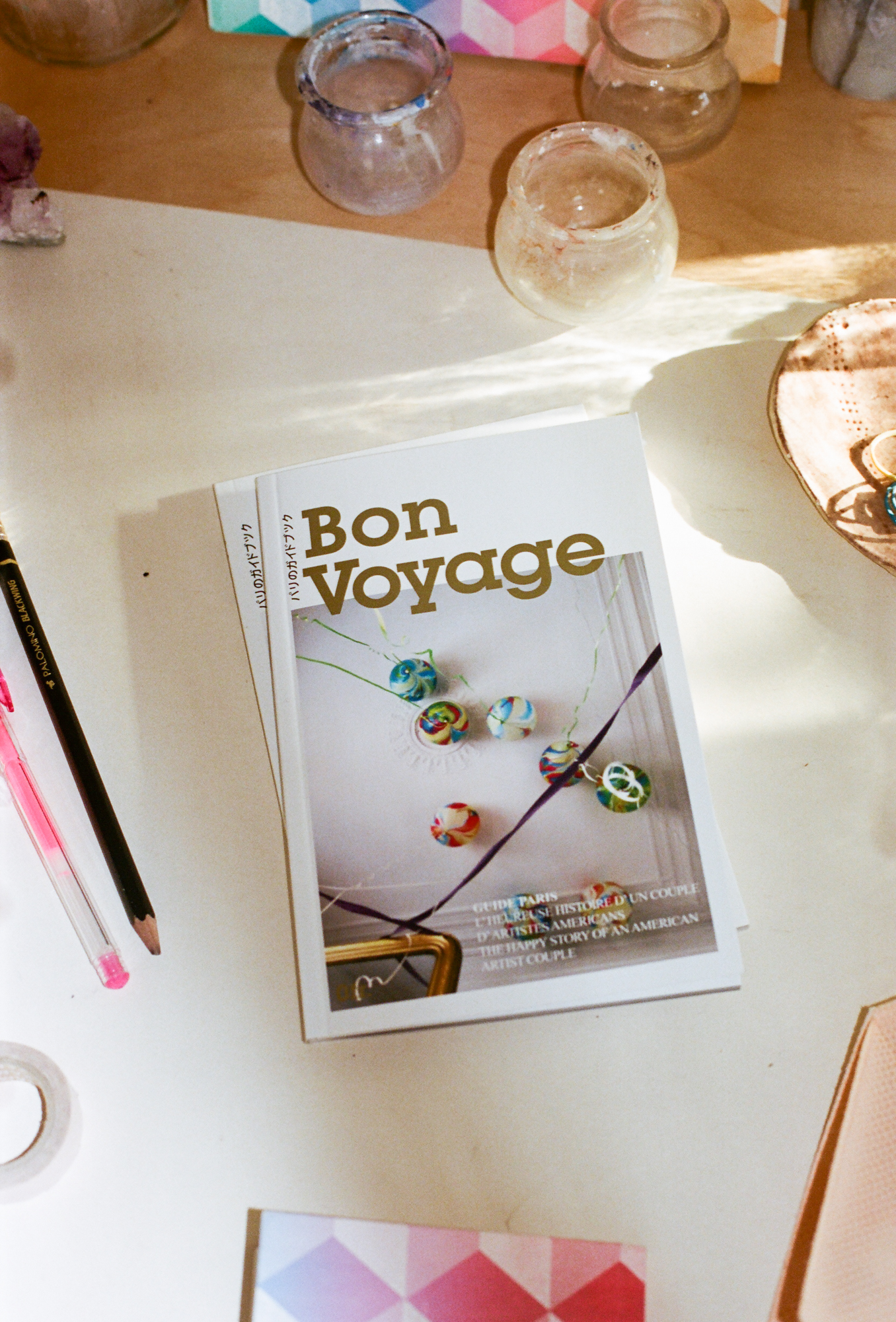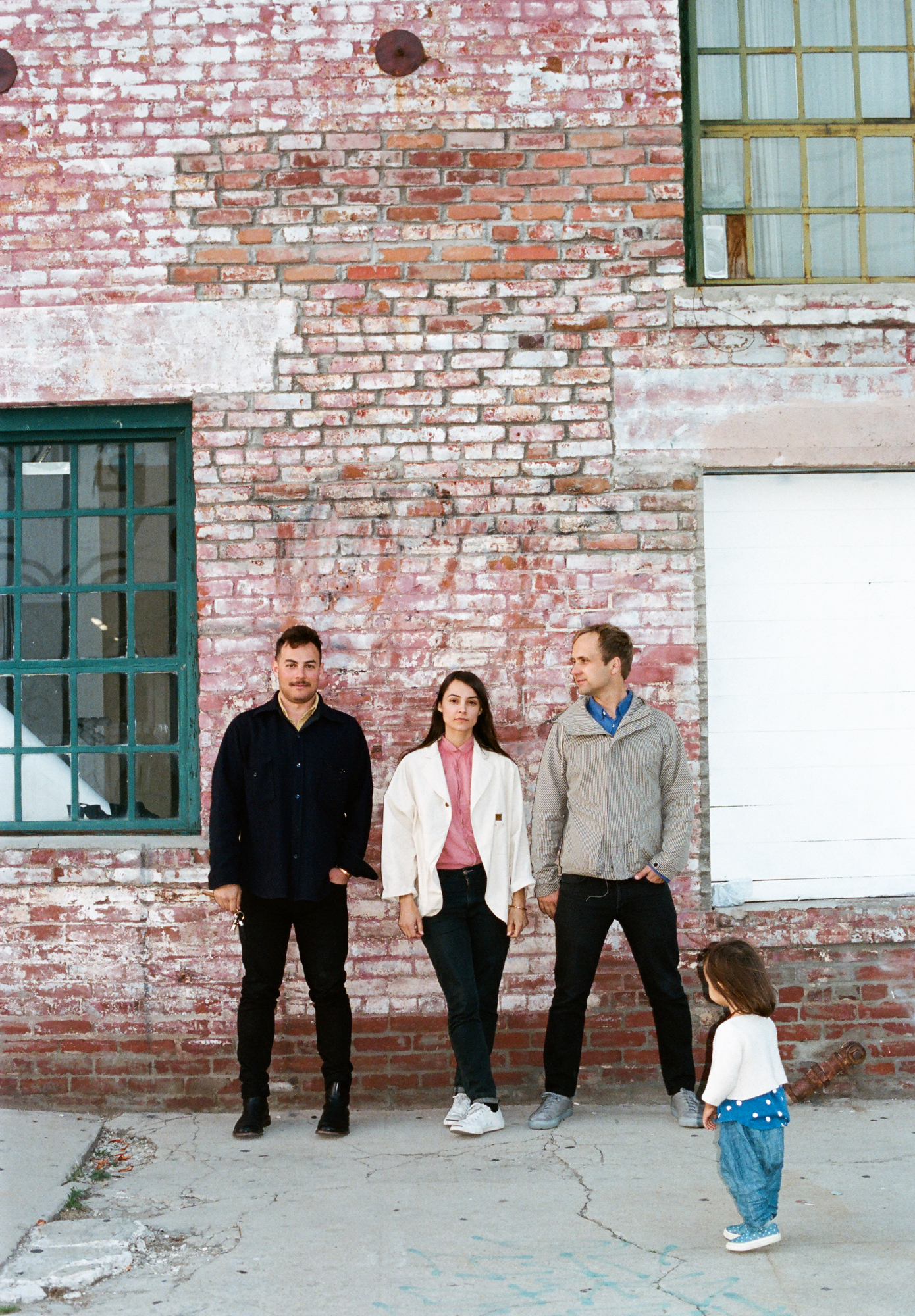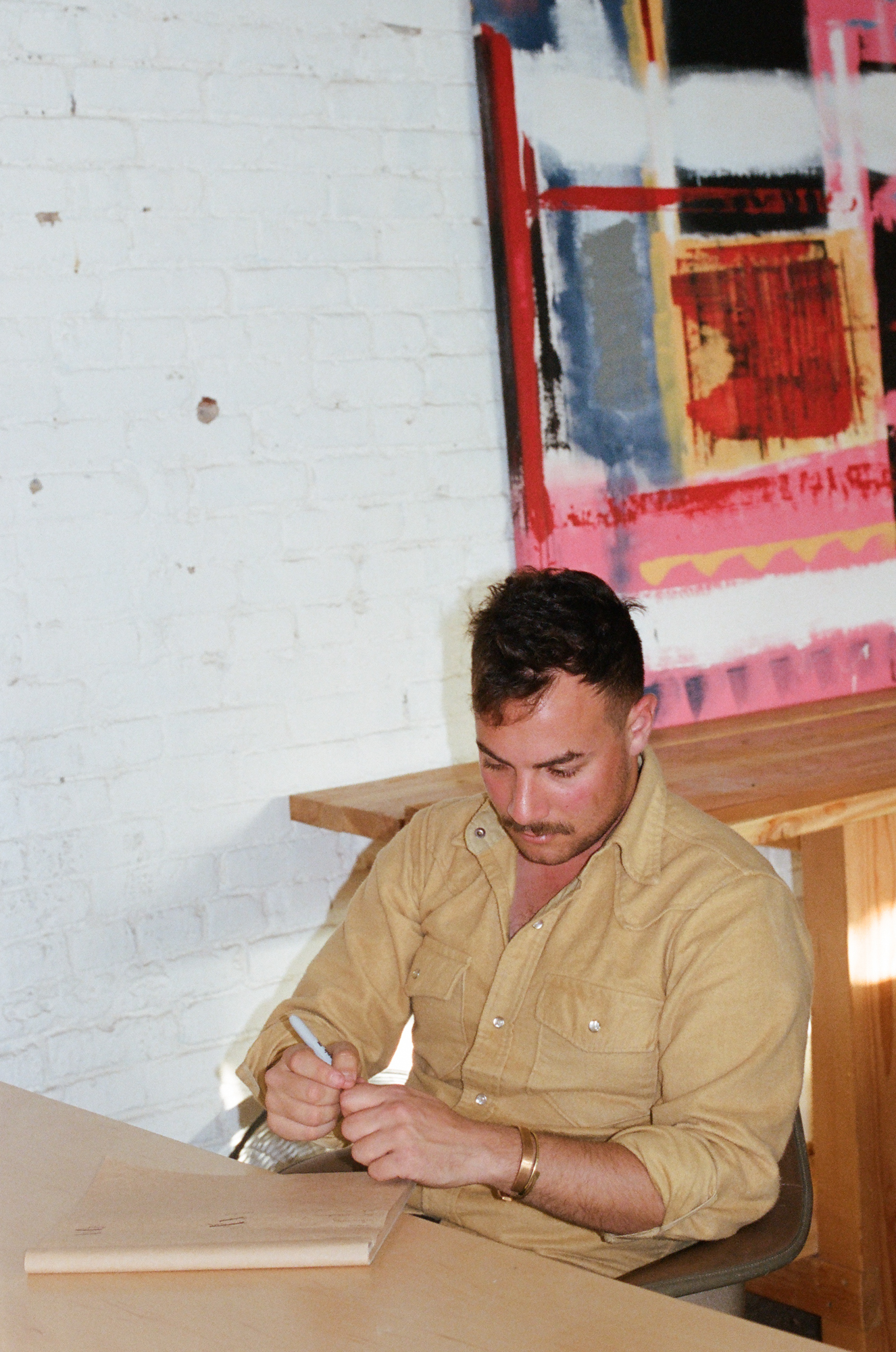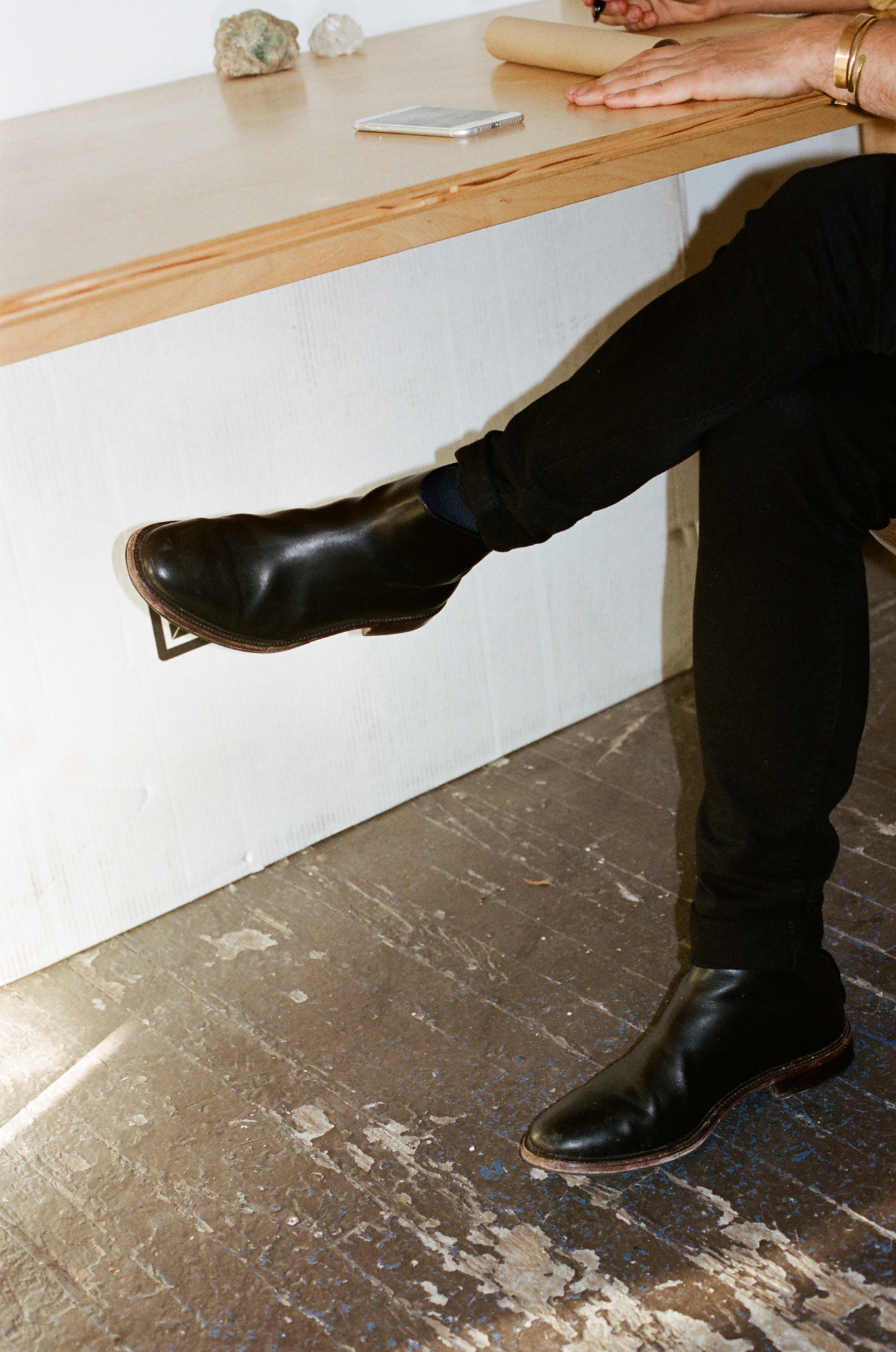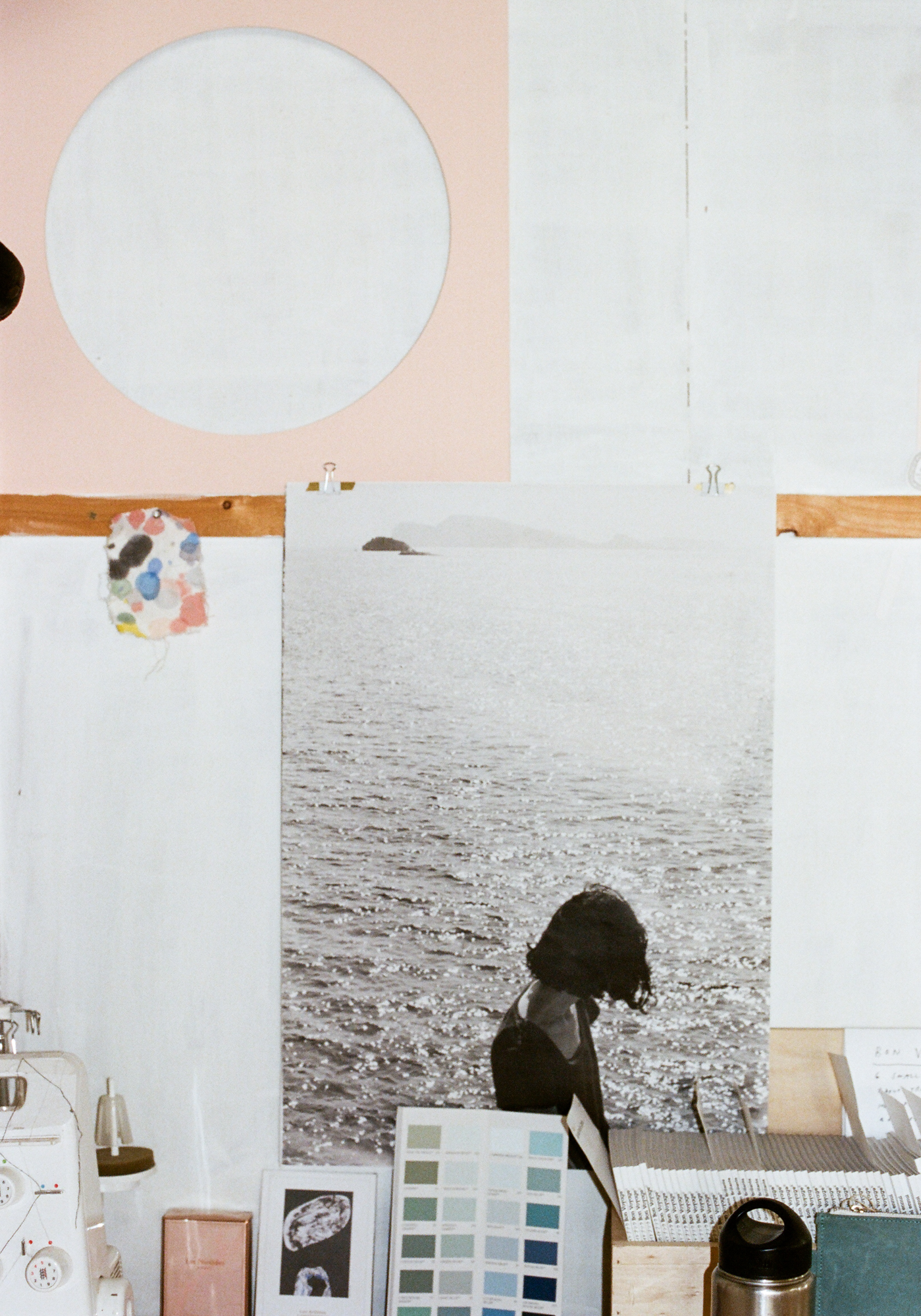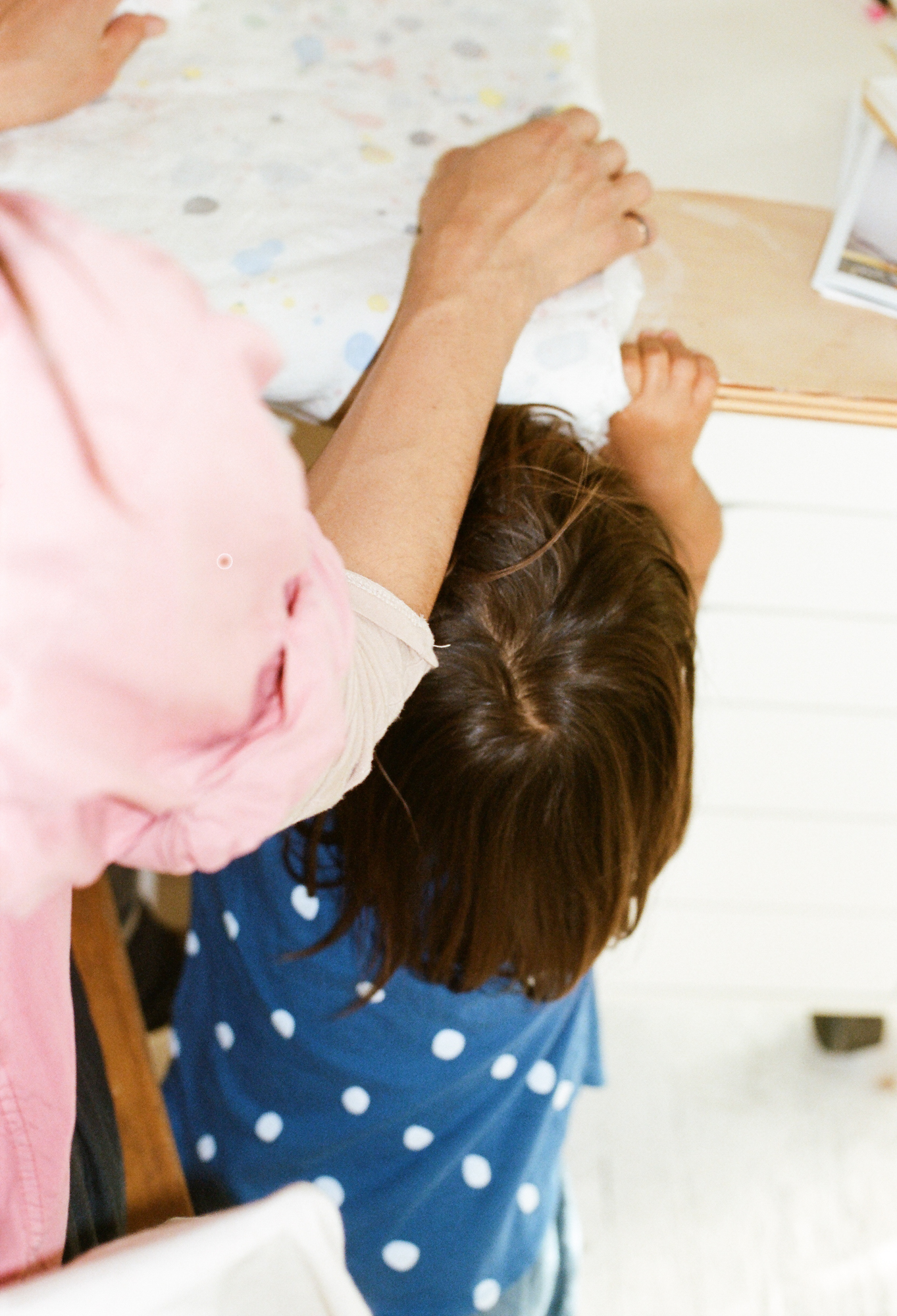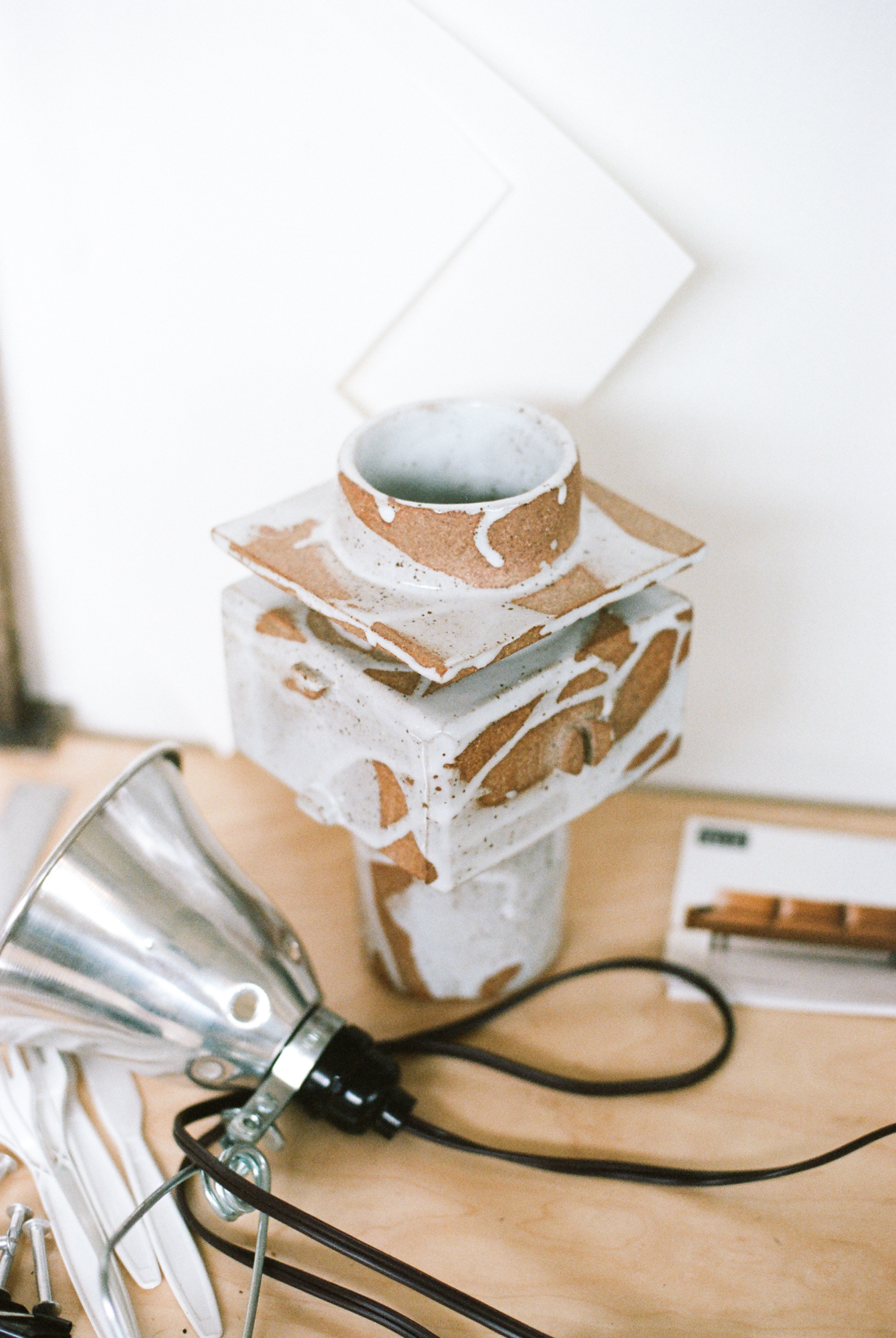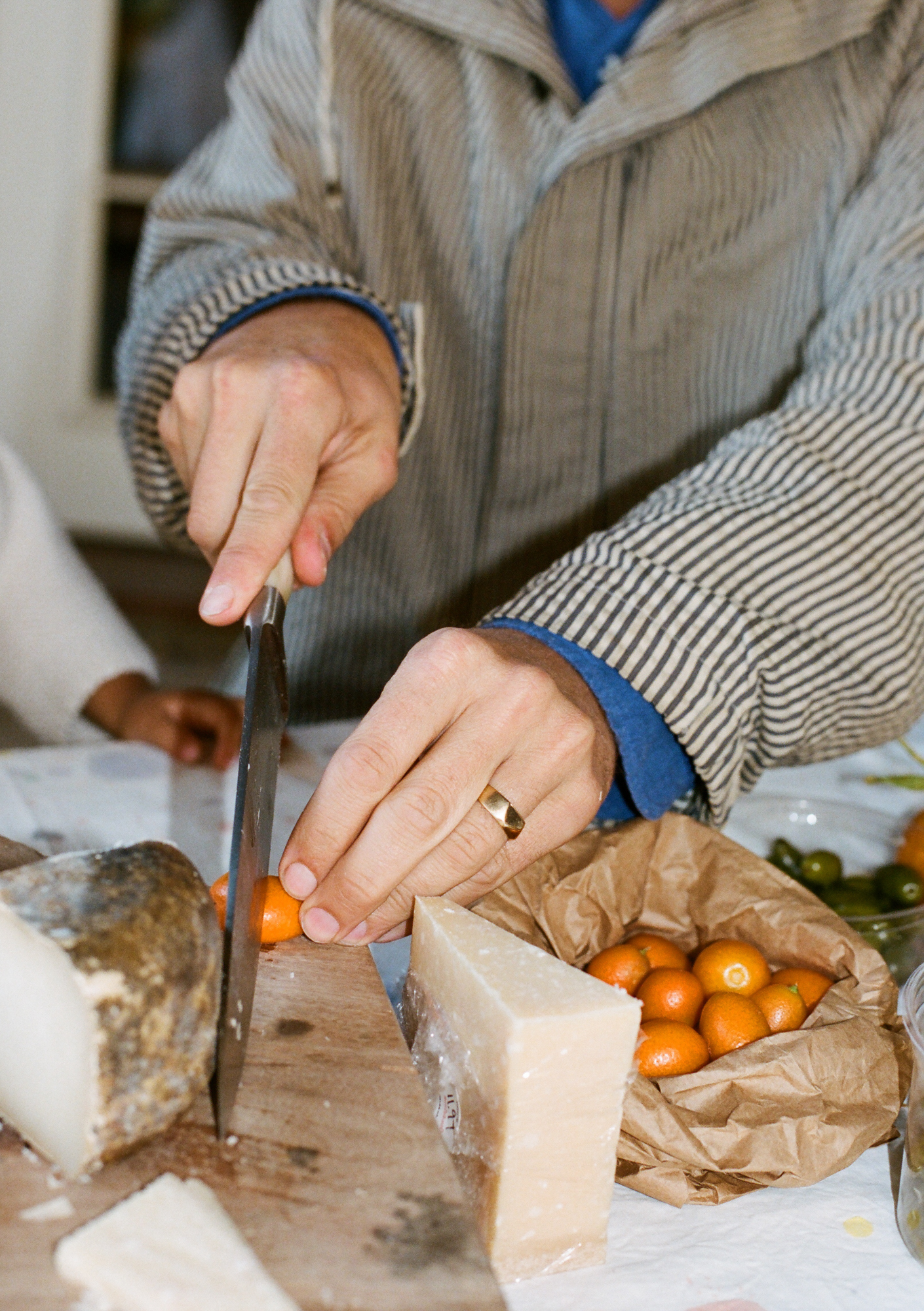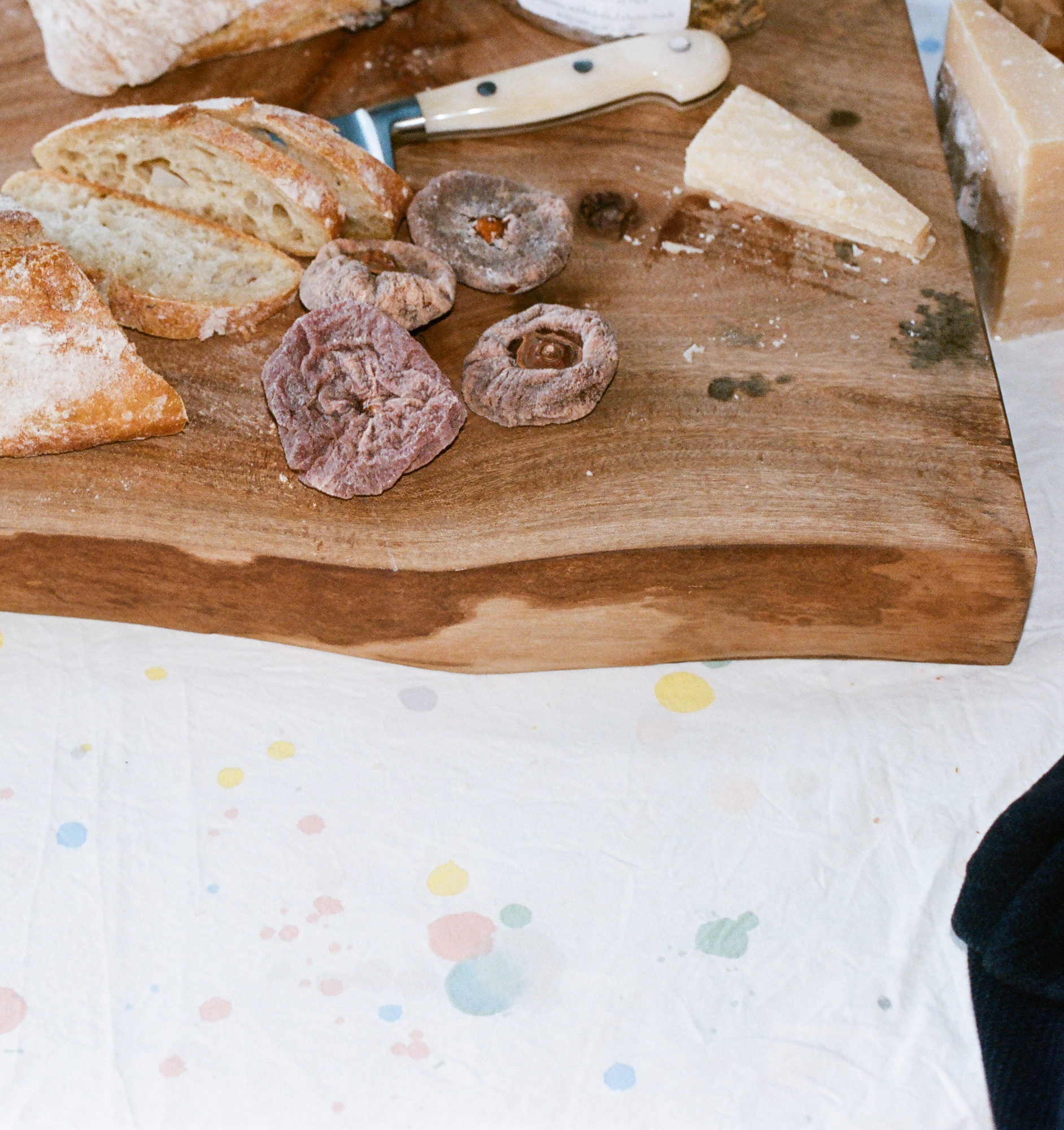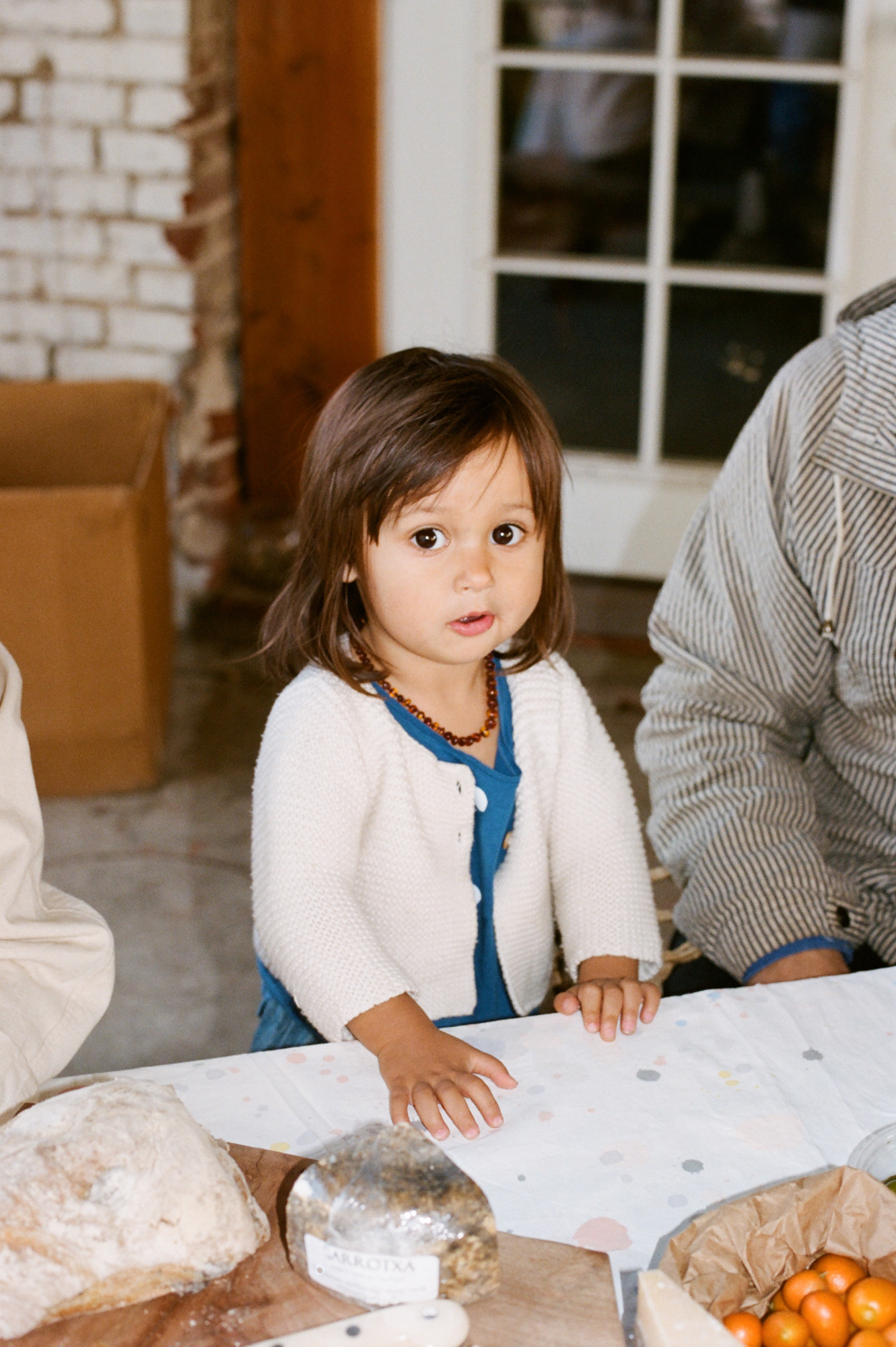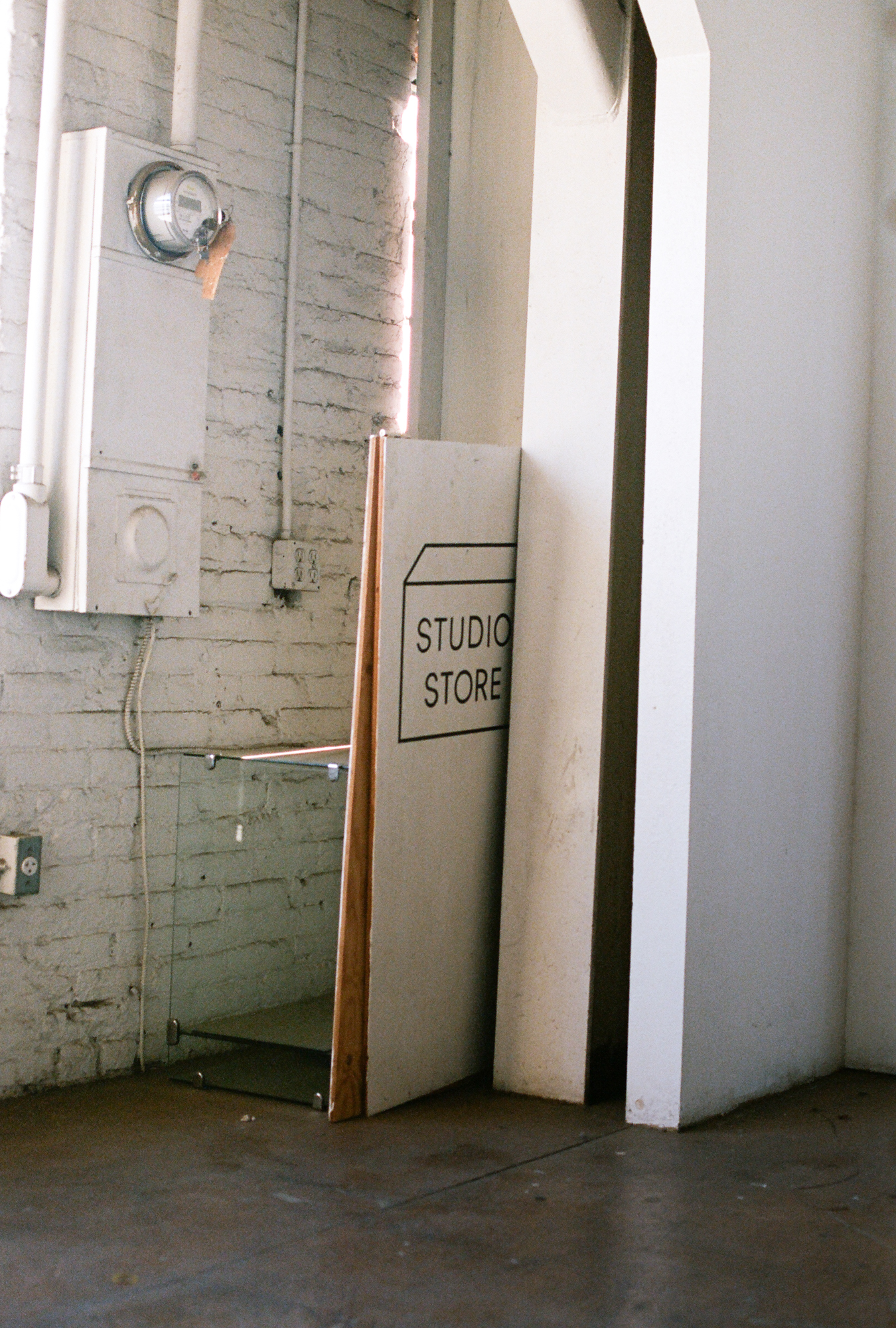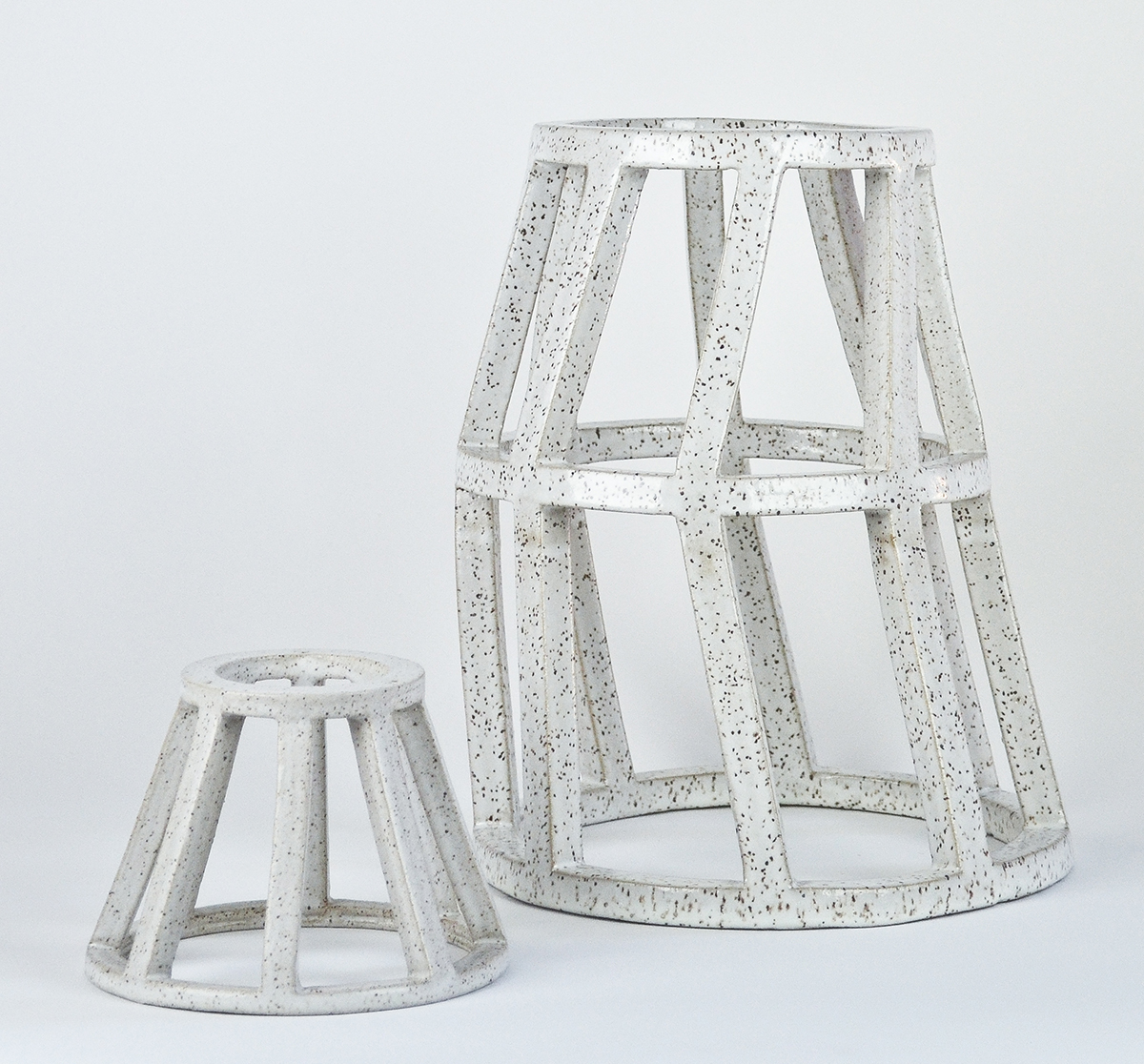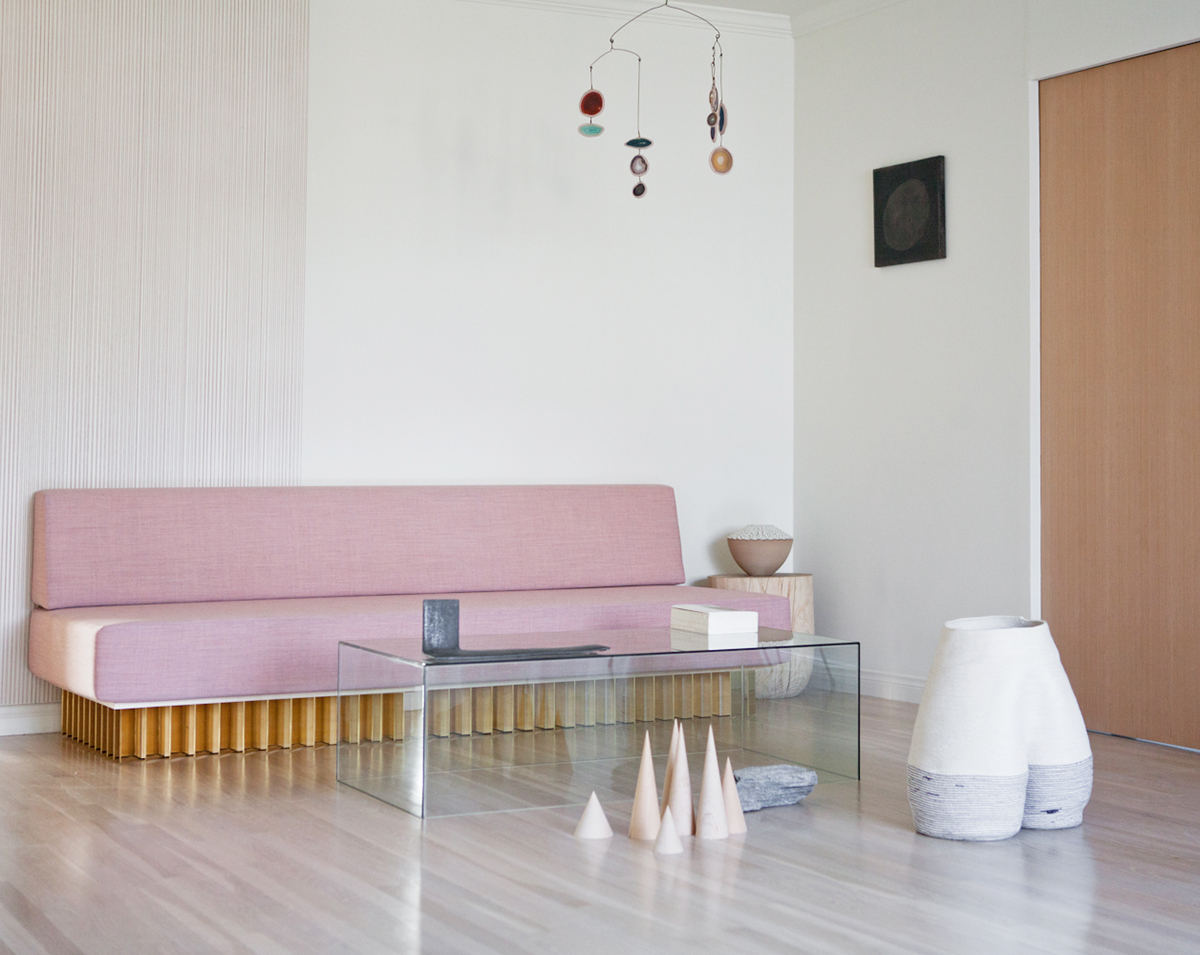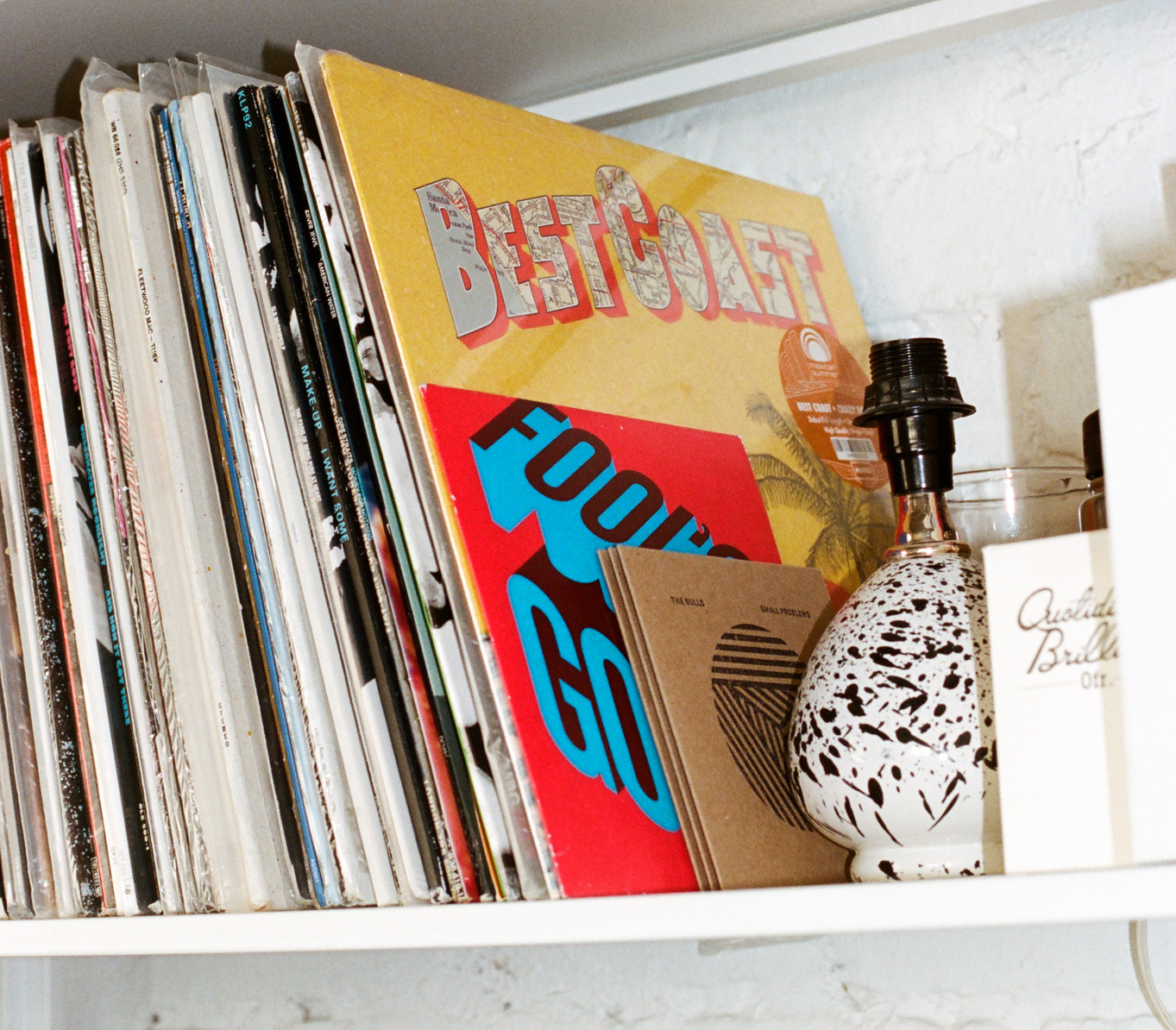
12.15.16
Studio Visit
Inside the Downtown Los Angeles Loft Where Five Creatives Collaborate
Somebody knew somebody. That’s the short answer, according to Claire Cottrell, to the question of how five creatives — each distinguished in their respective fields — found themselves working out of a shared studio in LA’s Arts District, and occupying its airy second floor. “There are two degrees of separation between all of us,” she says.
More specifically, the story began when designers David Rager and Cheri Messerli, fresh from a move to Los Angeles after a five-year stint in Paris, were informed of the space by a friend who’d once used it for clothing production. He’d hoped to find tenants to take his place — a group, preferably, who knew each other. Enter Cottrell, a filmmaker and photographer, and furniture designer Michael Felix, both friends of the couple’s. Cottrell’s neighbor, producer Saul Germaine, completed the circle.
Three years later, the group, who represent half of the building’s 10 total occupants, are not only studio mates, but close friends and frequent collaborators. Bonded by the experience of working for themselves — but in the company of others — they’ve cultivated a unique environment grounded in collective focus and creative intention. “We choose to share a space with like-minded friends because it adds a nice energy to an otherwise often-solo work life,” says Cottrell, pointing out that visitors are just as likely to find the five lunching together or enjoying a drink in the garden as they are to find them hard at work on their own. “It’s a flexible space. Everyone contributes something.” We spoke to each of the designers to get a sense of how they work, both on their own and in the communal space.
PHOTOS BY CLAIRE COTTRELL
Michael Felix
Michael Felix’s roots in furniture design run deep. “My grandfather was an upholsterer, and started his own company in 1959,” he says. “So I’m third generation in the upholstery design business.” Felix first dipped a toe into the trade as a sample-making apprentice at his family’s shop; later, he honed his skills on the factory floor. “Working there taught me the complexities of manufacturing, the importance of craftsmanship, and the the value of really knowing your design prior to execution.” Today, the designer runs his own business, using his family’s time-honored techniques to create a decidedly more modern collection of handcrafted (and made-to-order) pieces.
He prizes his studio’s ample space and natural light, and the uniquely social atmosphere of its shared surroundings. “I sometimes get distracted by my friends,” he admits, “but it’s nice to have a sense of community every day.” As of late, he’s used it as a venue for experimentation with new shapes, textures, and sculptural concepts, a practice he hopes to apply to larger-scale projects —in a museum, perhaps, or a hotel — in the coming year. New directions aside, his values remain anchored to a long history of thoughtful artisanship. “I love the idea of creating a timeless and extremely high-quality product,” he says. “When my clients draw comfort and build memories from a piece, that makes me feel the best.”
Claire Cottrell
Letting go may be described by many as an essential part of the creative process, but it was filmmaker and photographer Claire Cottrell’s desire to hold on, so to speak, that drove her to a career of capturing images. “I see things and I want to remember the moment — a color, the light, the way someone was dressed. I’ve taken so many photos in my life that for that reason.”
Over the course of her career, Cottrell’s images have appeared at the Palais de Tokyo in Paris and Berlin’s Galerie Für Moderne Fotografie; as a commercial director, she’s created award-winning work for The Human Society and PBS. Other recent projects include contributions to Freunde von Freunden and APIECE APART’s Woman series, as well as the principal imagery for the debut cookbook from the wildly popular LA restaurant Sqirl. “I’ve been told my work is romantic,” she says. “Something might be the most mundane thing in the world, but I like to capture and express it in a way that’s not matter-of-fact.”
Her studio isn’t precious — and she prefers it that way. She arrives early, dividing her attention between computer work and manual pursuits: paintings, collage, small booklets. The space is also where she tends to BOOK STAND, the online shop she launched in 2013, specializing in an international selection of art books and creative publications. The concept was born of a pre-Internet stint as a director’s assistant, during which Cottrell scoured bookstores for reference imagery: “I loved the idea of a shop for ideas.”
Next year, she plans to organize a few $5 book sales out of the studio — and to take the show on the road, as she’s done in the past. “I hope to do another installation in Berlin, and maybe also Paris,” she says. The world, one senses, awaits.
David Rager & Cheri Messerli
Family drew Southern California natives David Rager and Cheri Messerli back to Los Angeles after five years in Paris — “we have a three-year-old who didn’t get to see her grandparents much,” Rager explains — but their work keeps them happily entwined in both places. The founders of Weekends, a collaborative studio centered on a mutual passion for interiors, they’re busy enough that the initial naming inspiration no longer holds true. “We called it Weekends because that’s what it was: projects we’d work on together in our spare time,” says Rager. Now, as its website points out, Weekends requires weekdays, too.
Their first project, the branding and interior of a Parisian taqueria called Candelaria, served as a gateway to a fruitful — if unexpected — career in restaurant design. (Rager’s background is in graphic design; Messerli has worked in fashion.) Most recently, the pair lent their skills to the development of a Silverlake eatery called Botanica, the opening of which they eagerly anticipate. “Working with the two amazing women who are opening the place—and having clients who really love what they’re doing and what we do for them—makes a great project,” Messerli says.
The two work out of a section of the shared studio that Rager calls The Management Suite. “It’s the kind of space you’d imagine a boss overlooking the factory floor in,” he says.
It’s also where Messerli works on another blossoming endeavor: a jewelry line. “I wasn’t interested in jewelry design initially, but I’ve found it to be a more flexible and creative outlet than designing clothing,” she says.
“We’re kind of hidden in the back corner where it’s quiet and it’s easy to get work done,” Rager adds. Perhaps too easy: He recently installed a turntable, so that every time a record ends, they’ll be forced to leave their seats.
Saul Germaine
Seattle native Saul Germaine has long followed a creative path. He’s played drums since the age of four, a practice that drove him, years later, to study music in southern India; acted since childhood; and worked as a sommelier before pursuing a production career. “Being around the creative process is something very familiar to me,” he says. “Almost like a home.” These days, as a creative producer of film, commercials, and narrative content, he’s found an outlet that allows him to nurture a principle passion. “Making things that touch you on a human level—that bring us closer to understanding ourselves and others—is my primary interest,” he says. “I got started doing this work because I love connecting with people.”
Currently at work finishing a feature film called Everything Beautiful Is Far Away, Germaine can be found at his studio most weeks when he’s in town. As for his its design, he says, simplicity reigns supreme. “I have two desks in a whitewashed room, and one notebook. It’s simple because that’s how I think most clearly.” Though his days as a sommelier have passed, he stores his wine collection at the studio and shares it regularly in the building’s back garden. “I love this community,” he says. “Everyone is committed to deepening their relationship to their craft. It’s a potent and powerful experience to sit in a space with people like that.”
